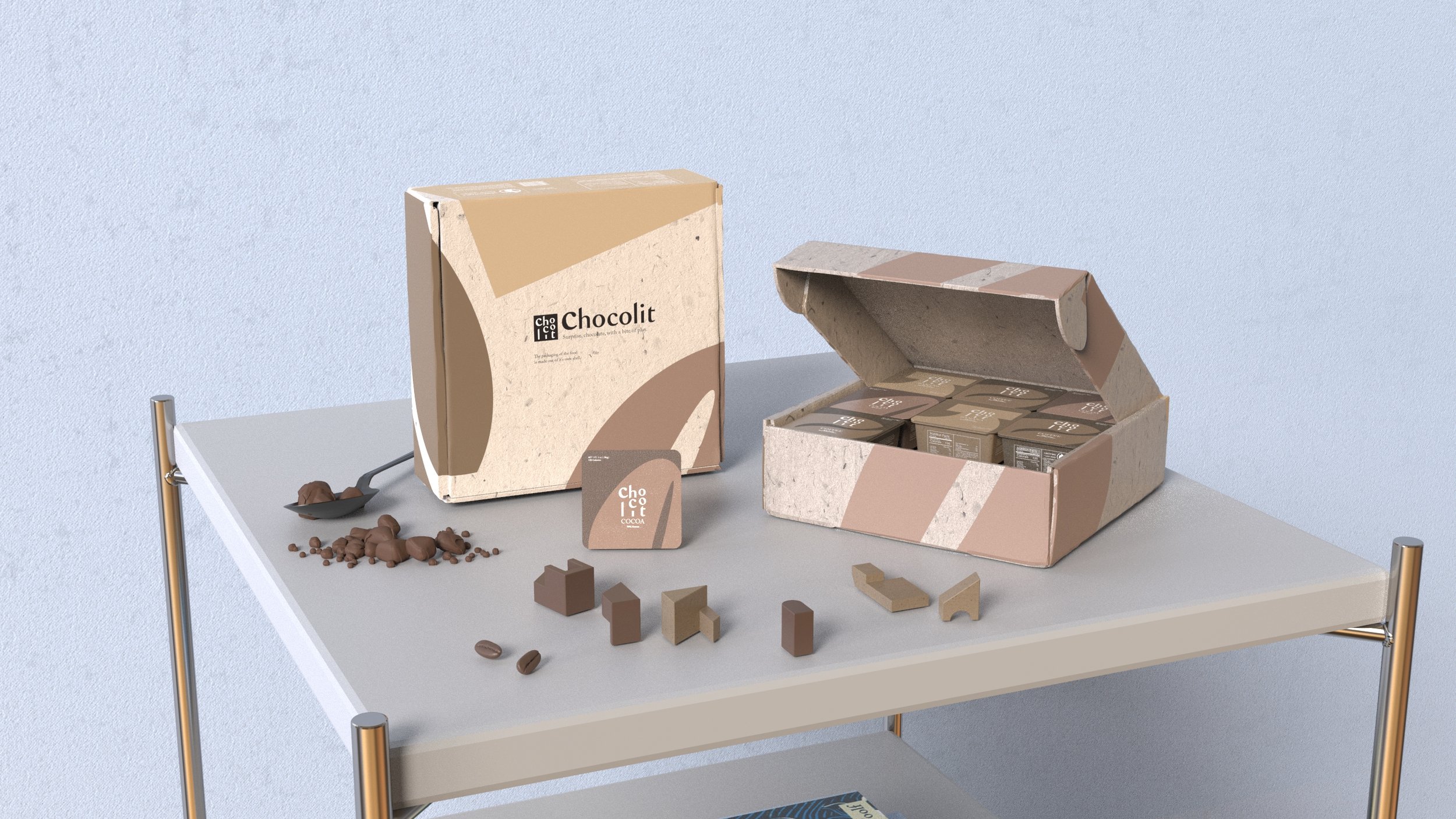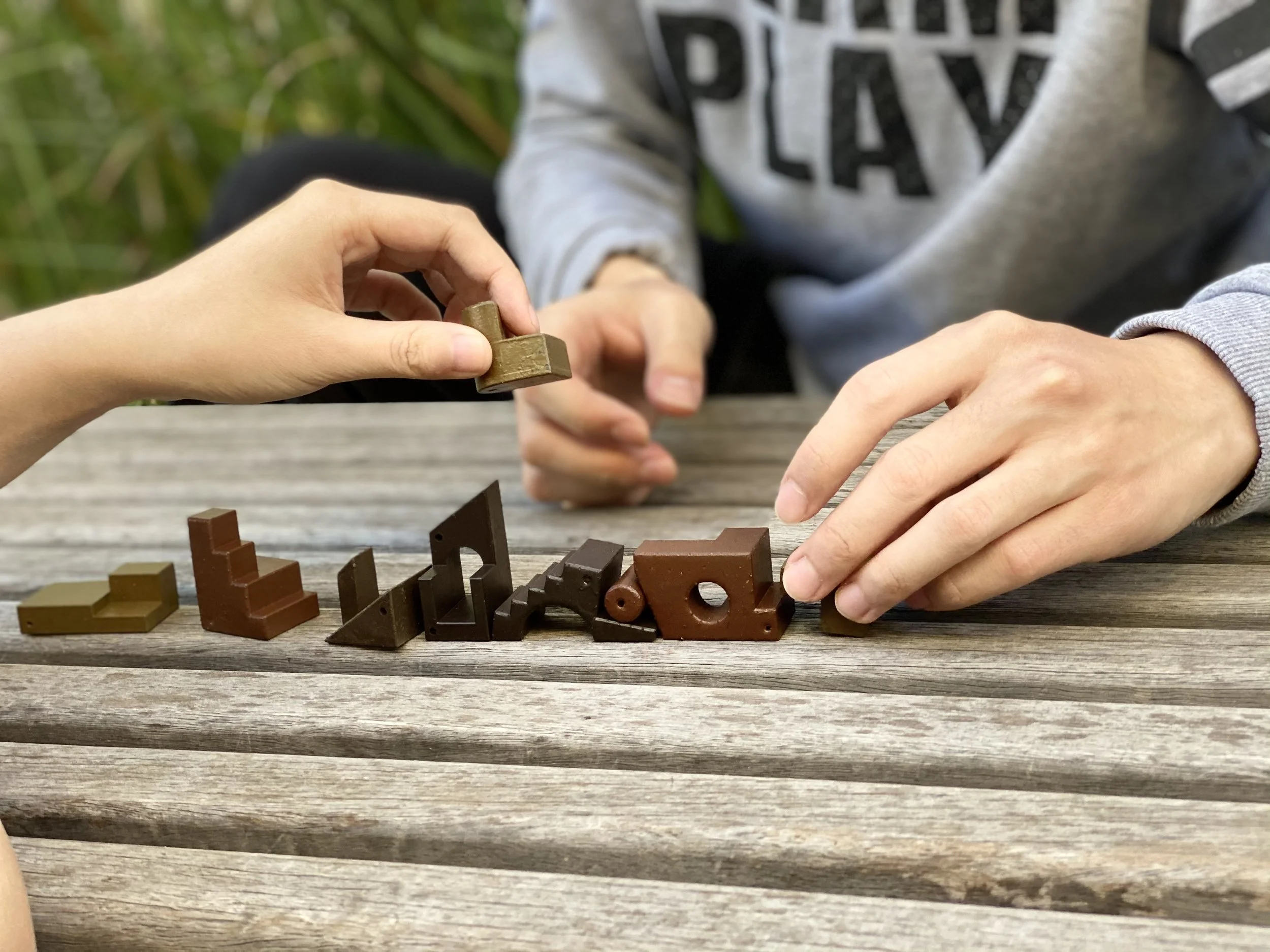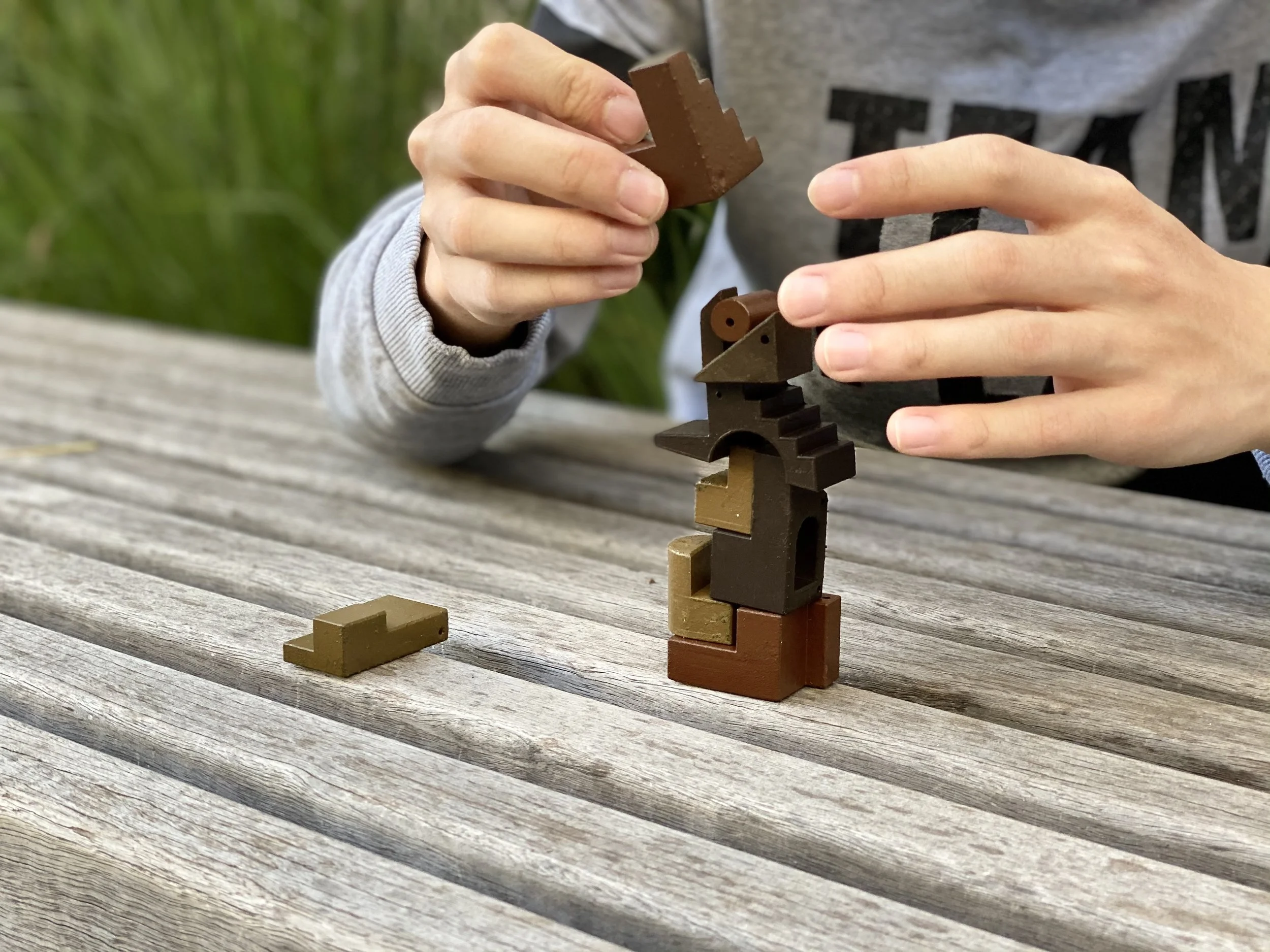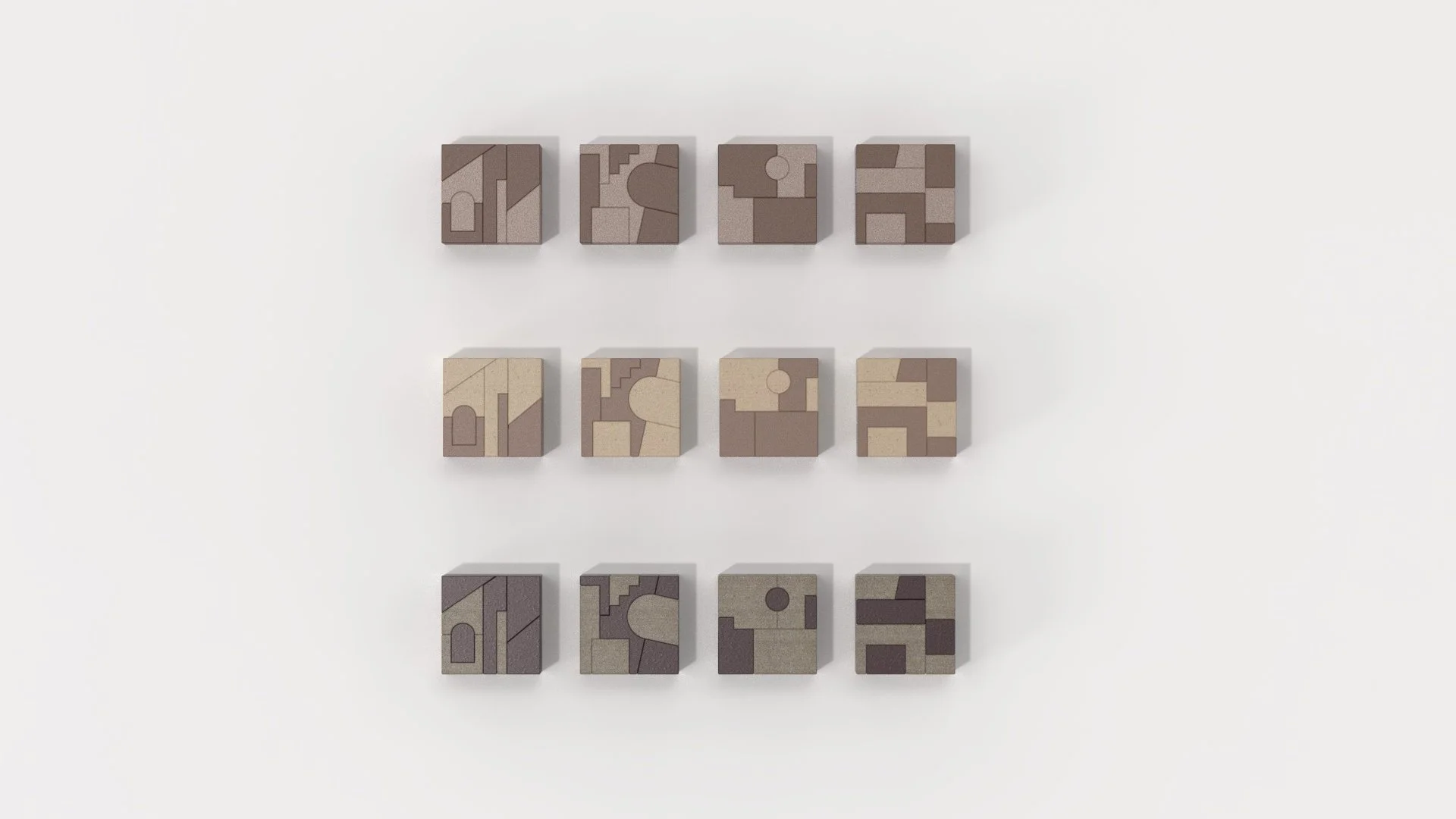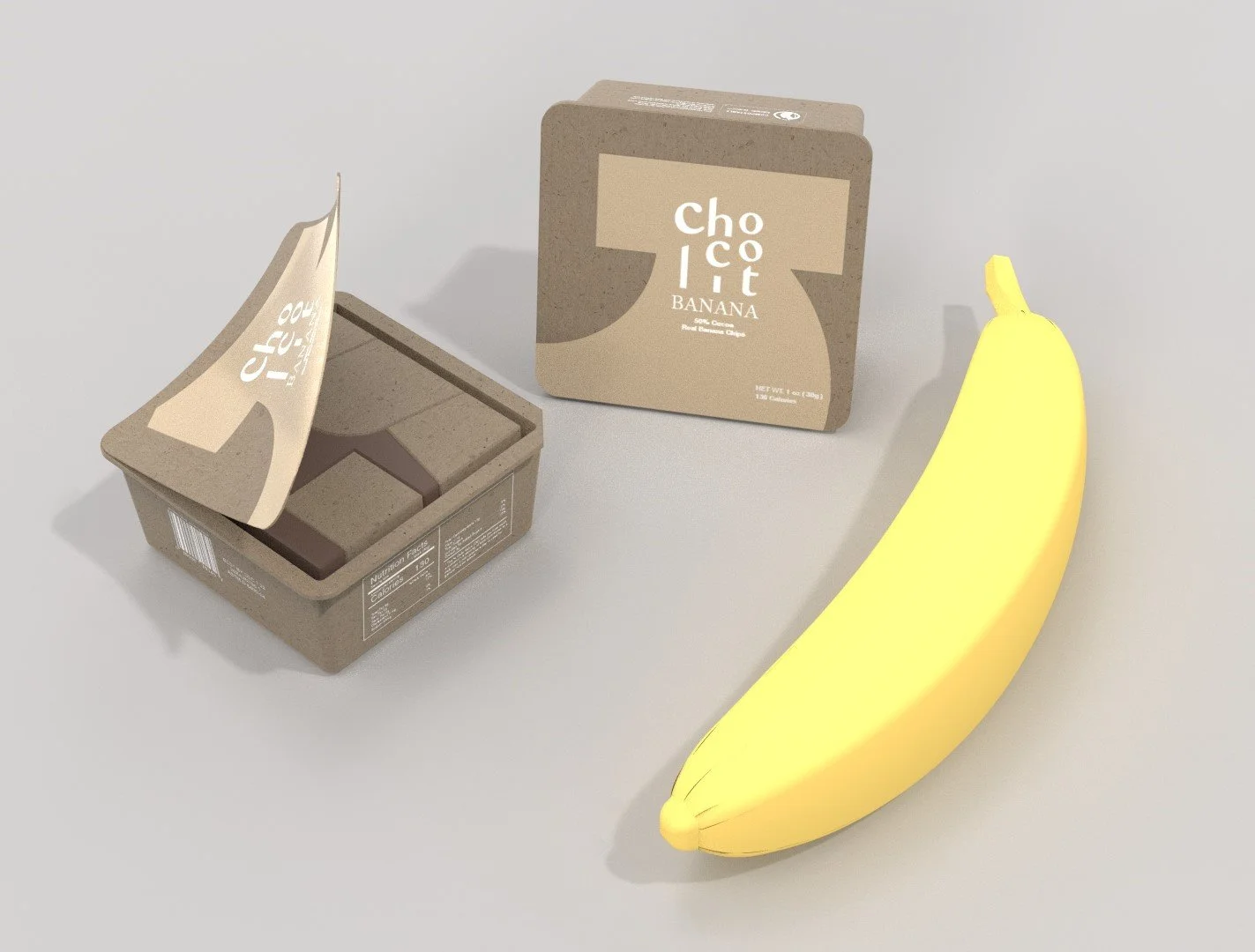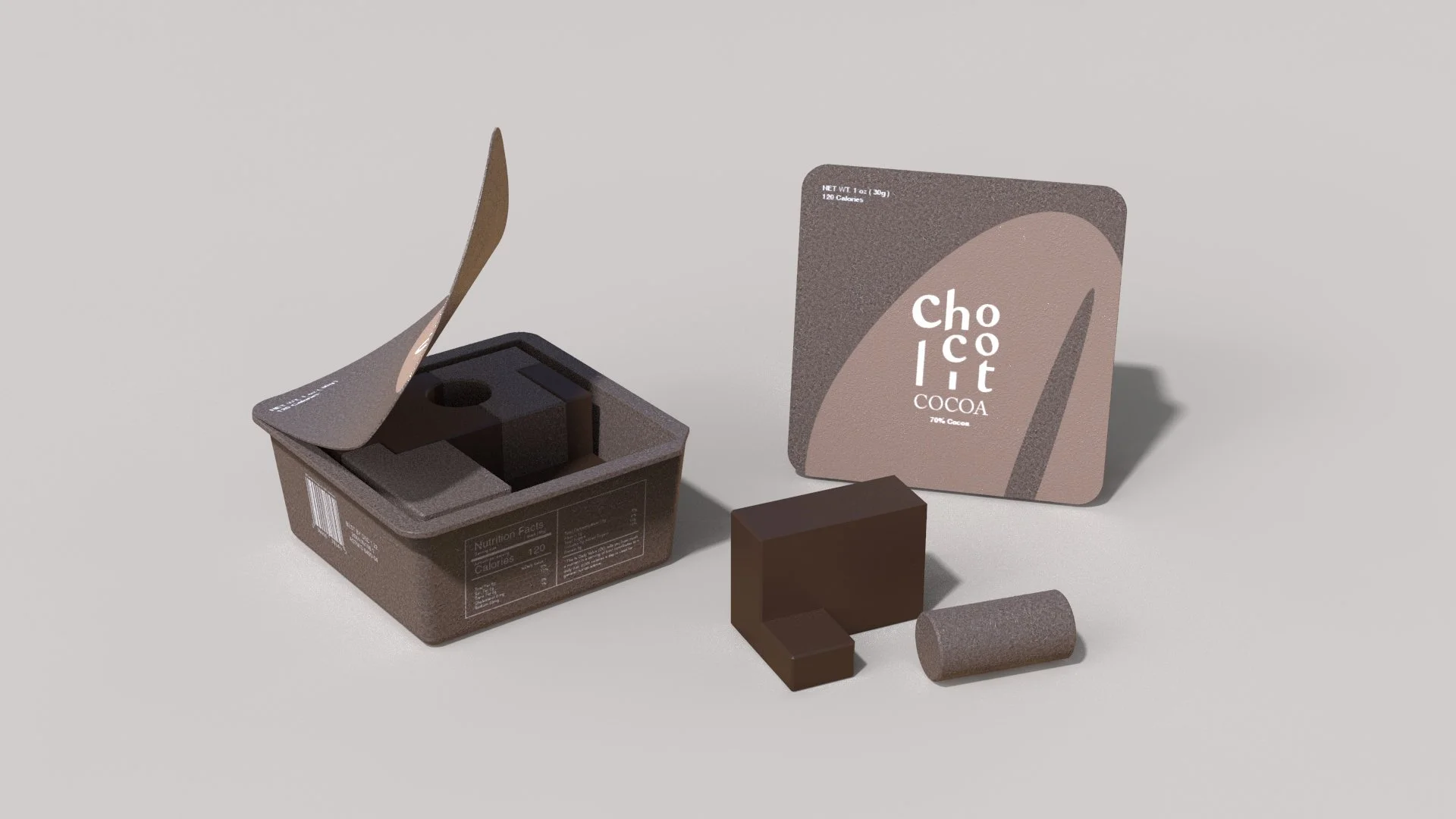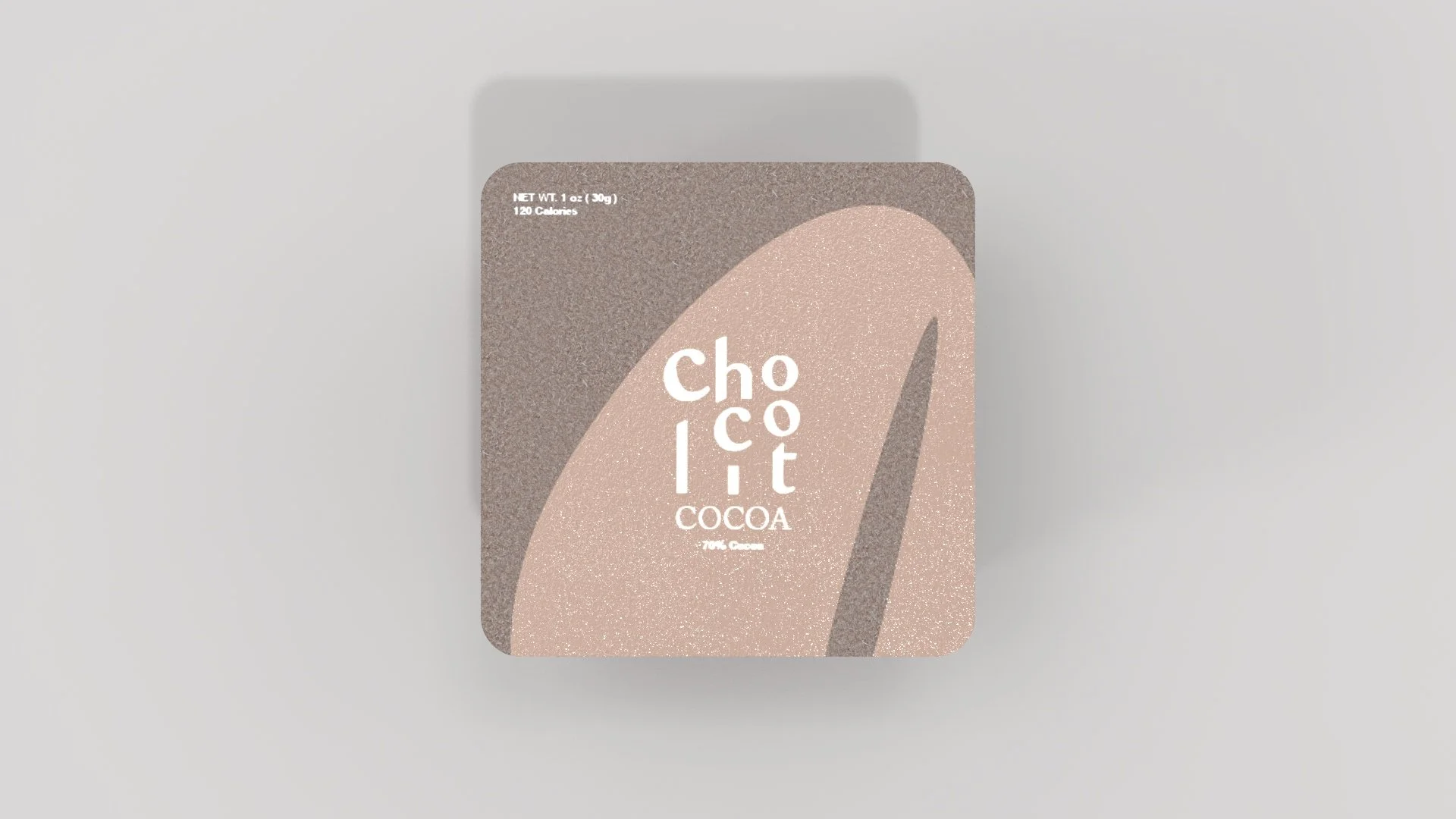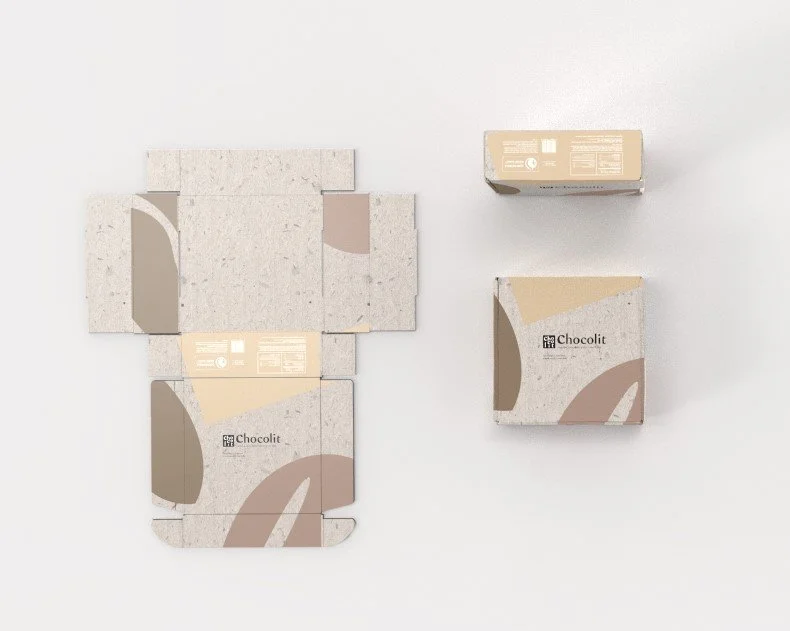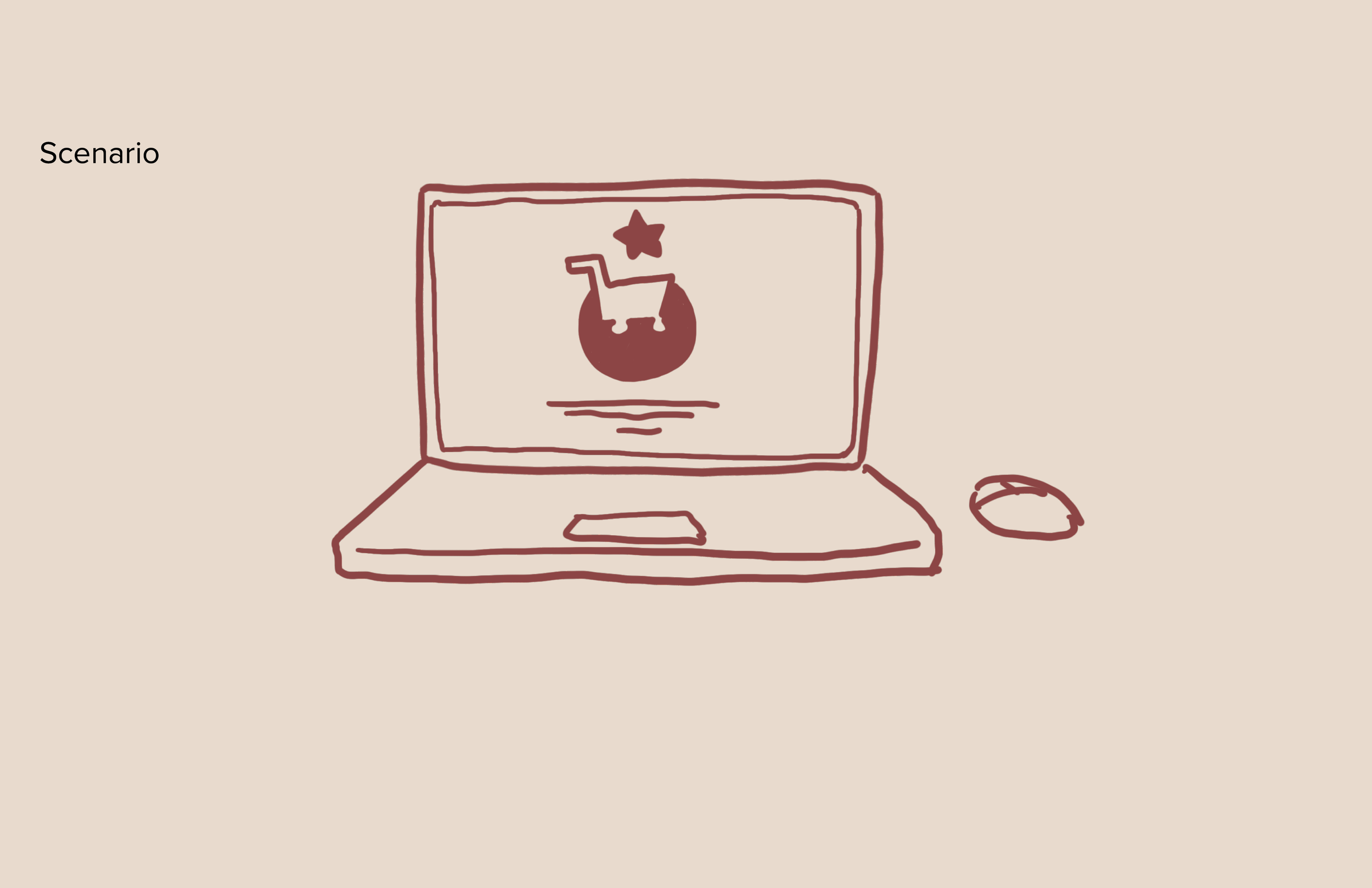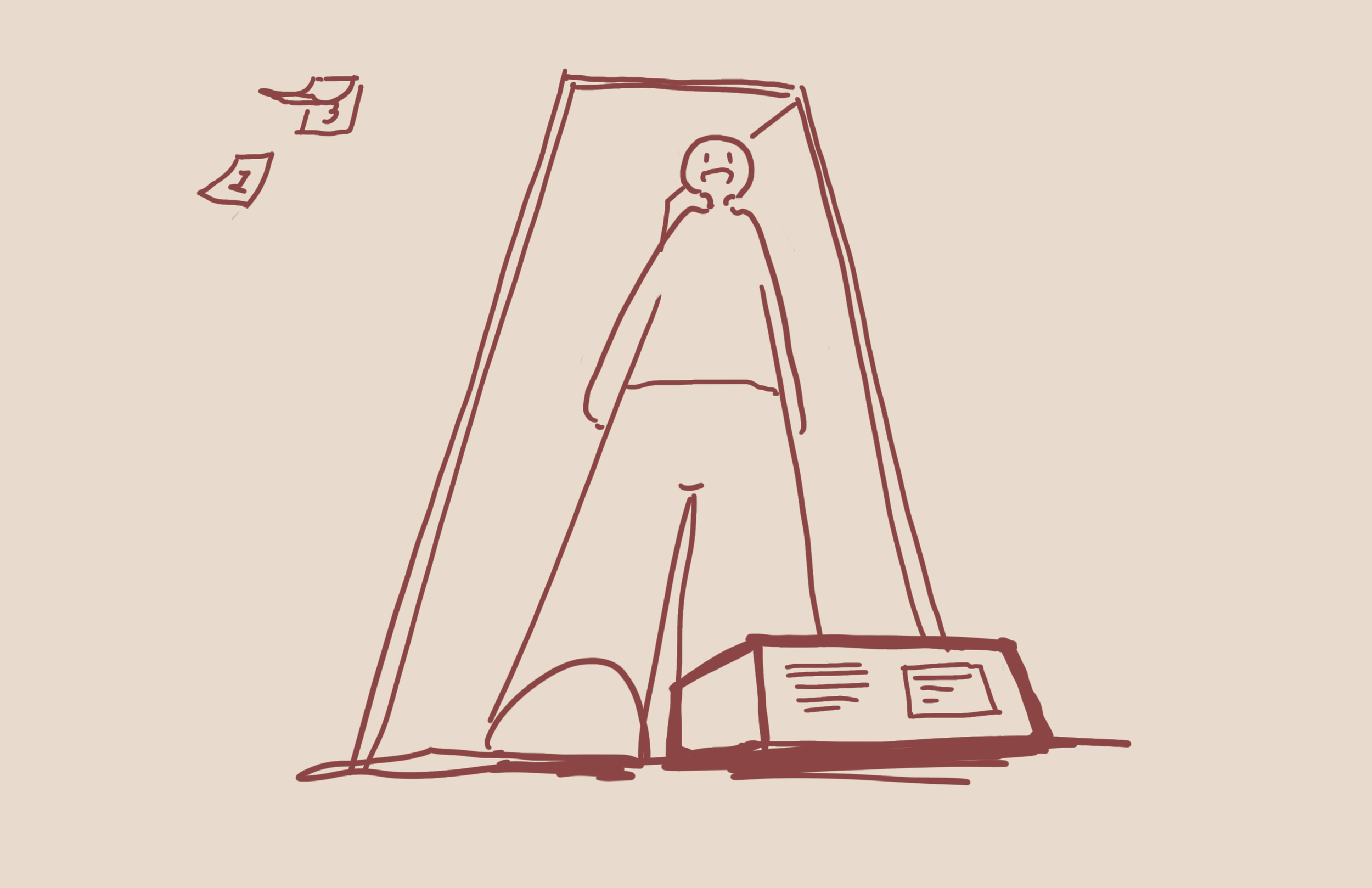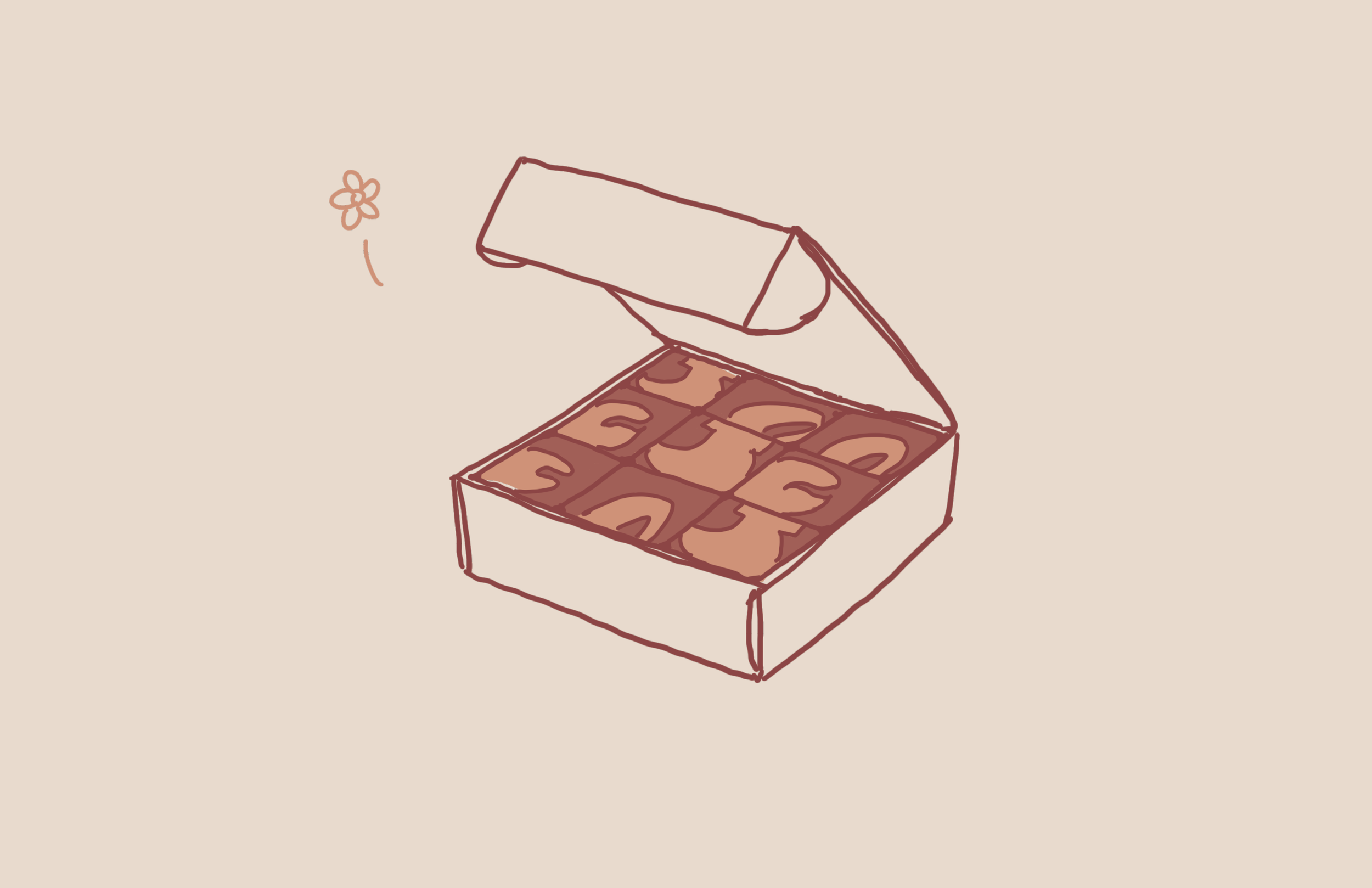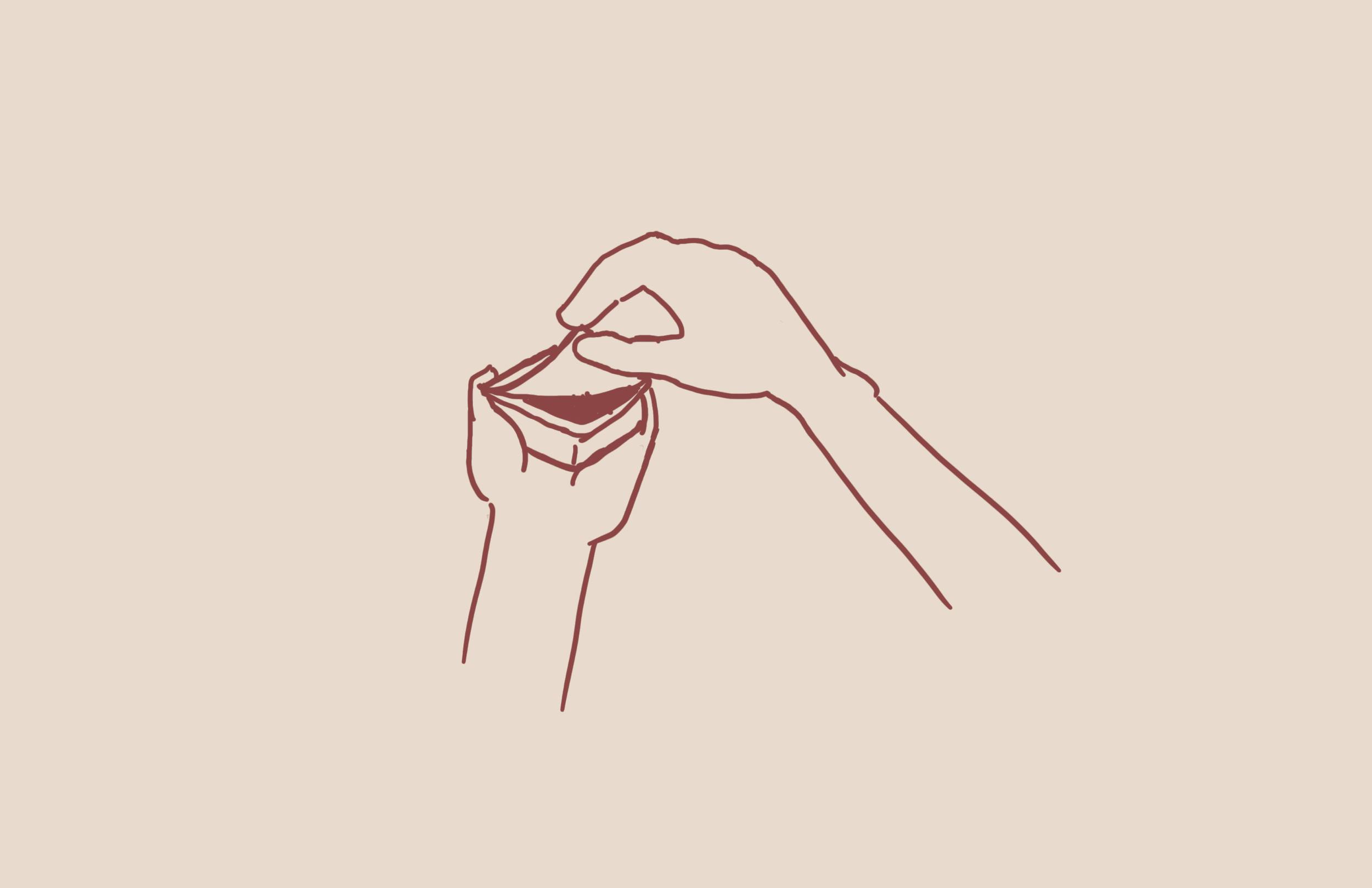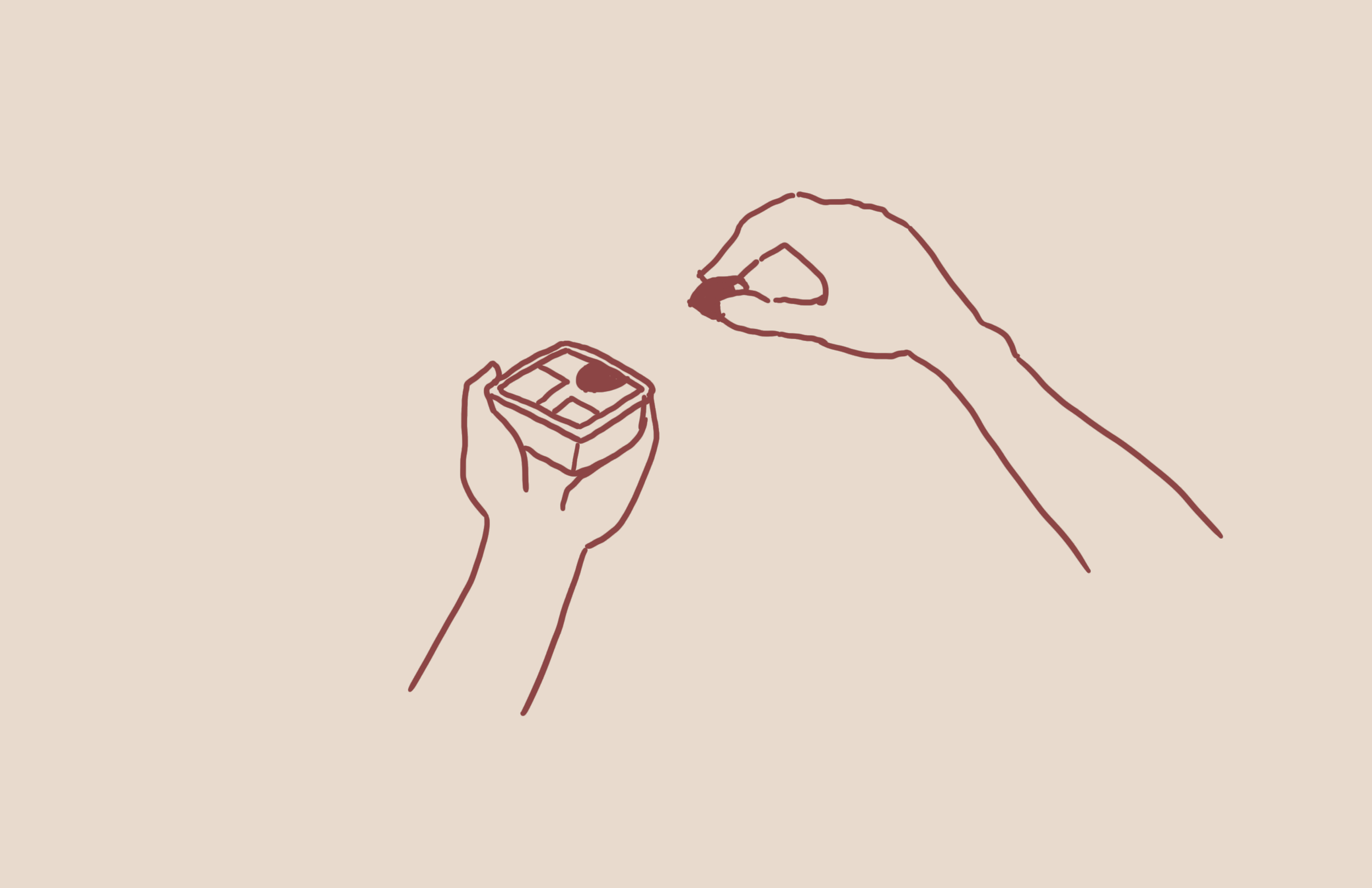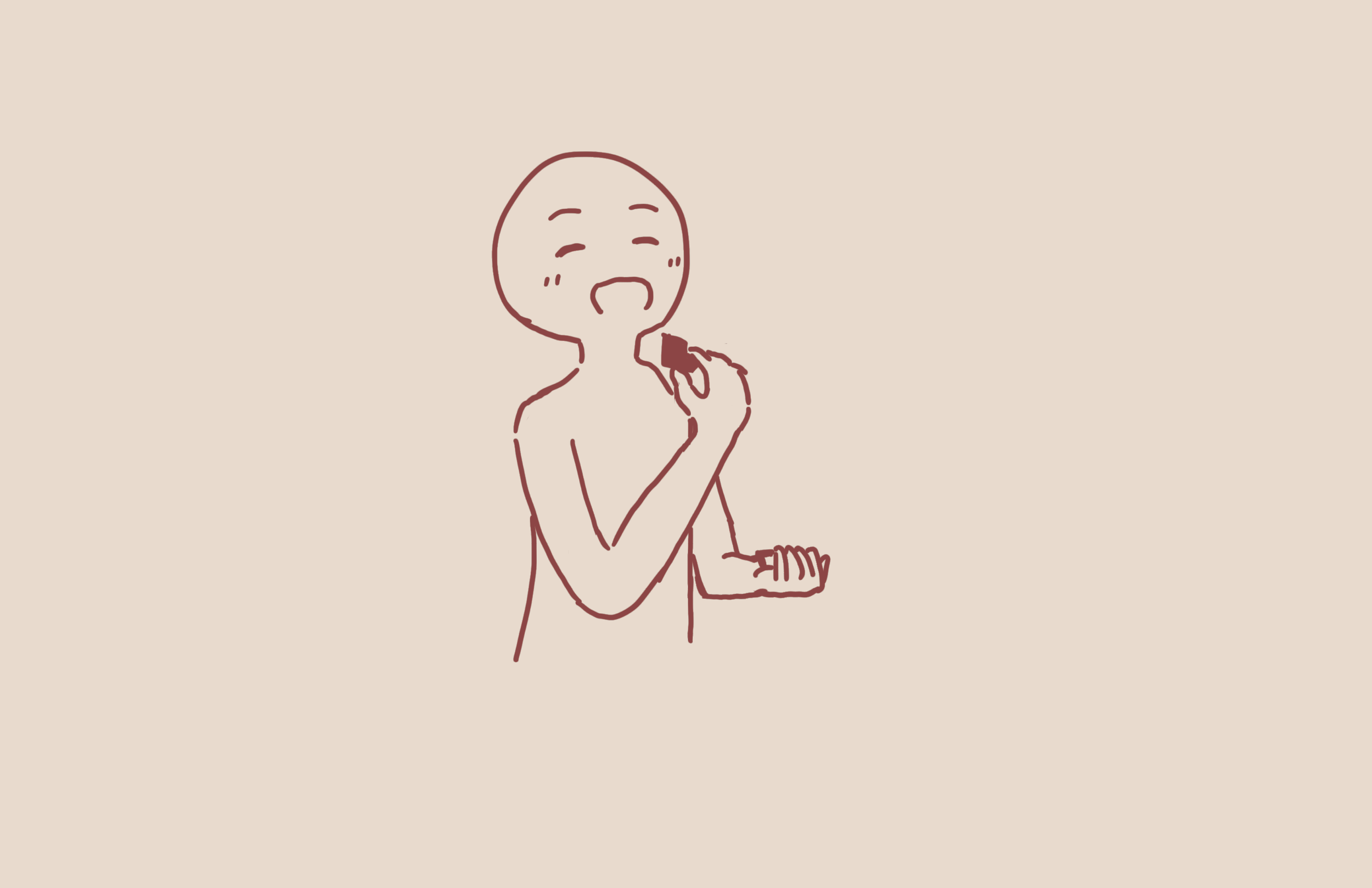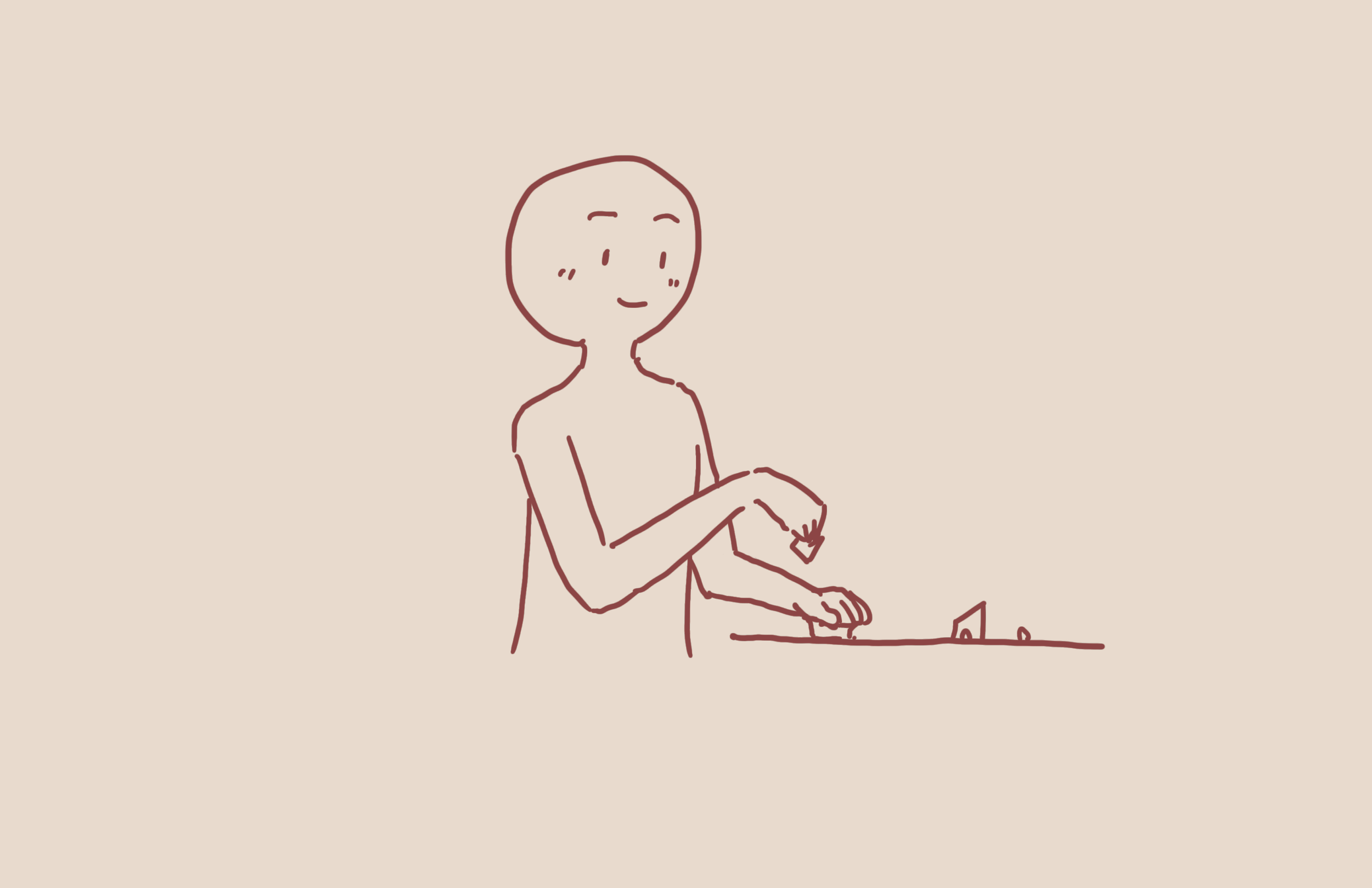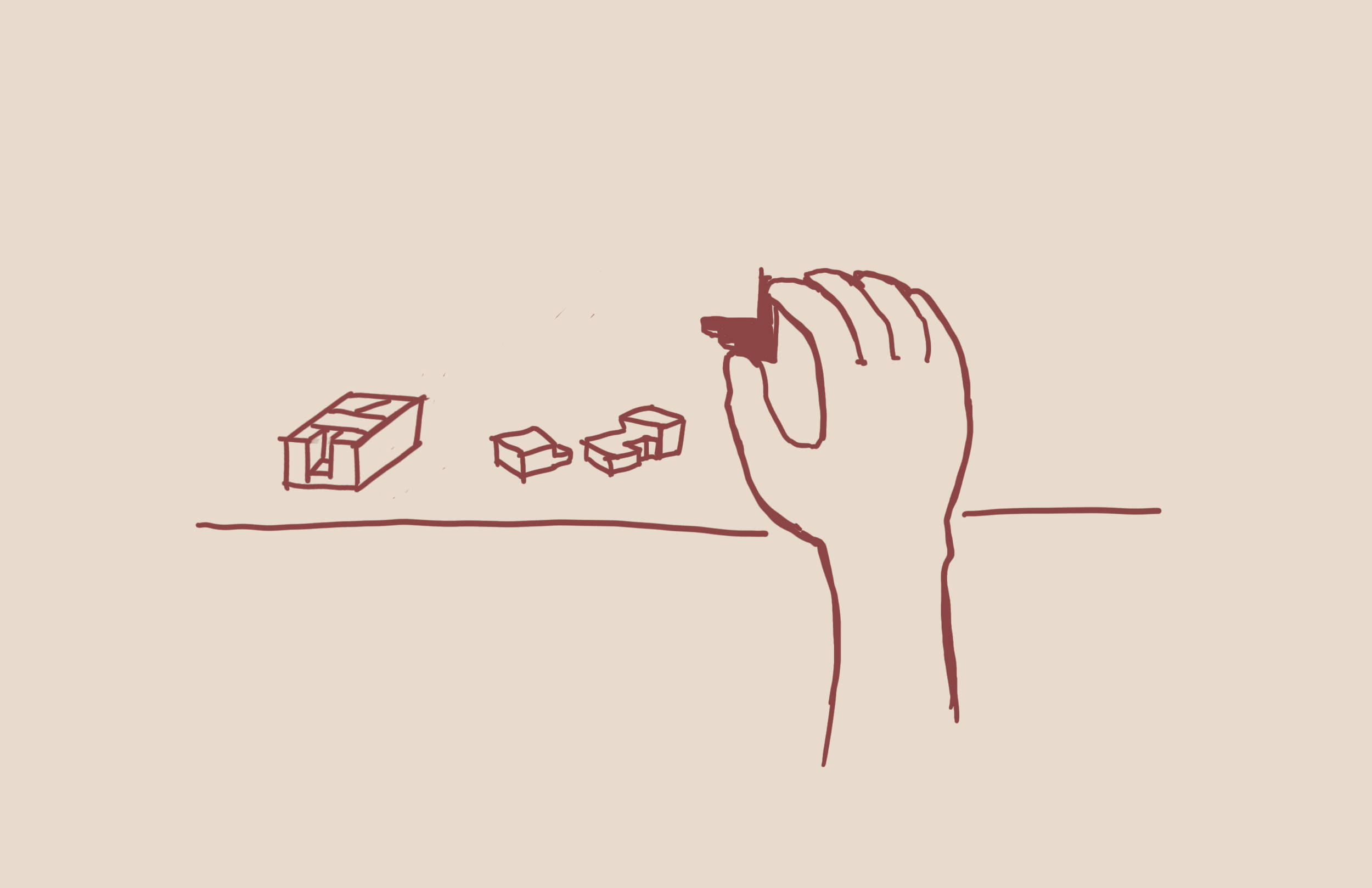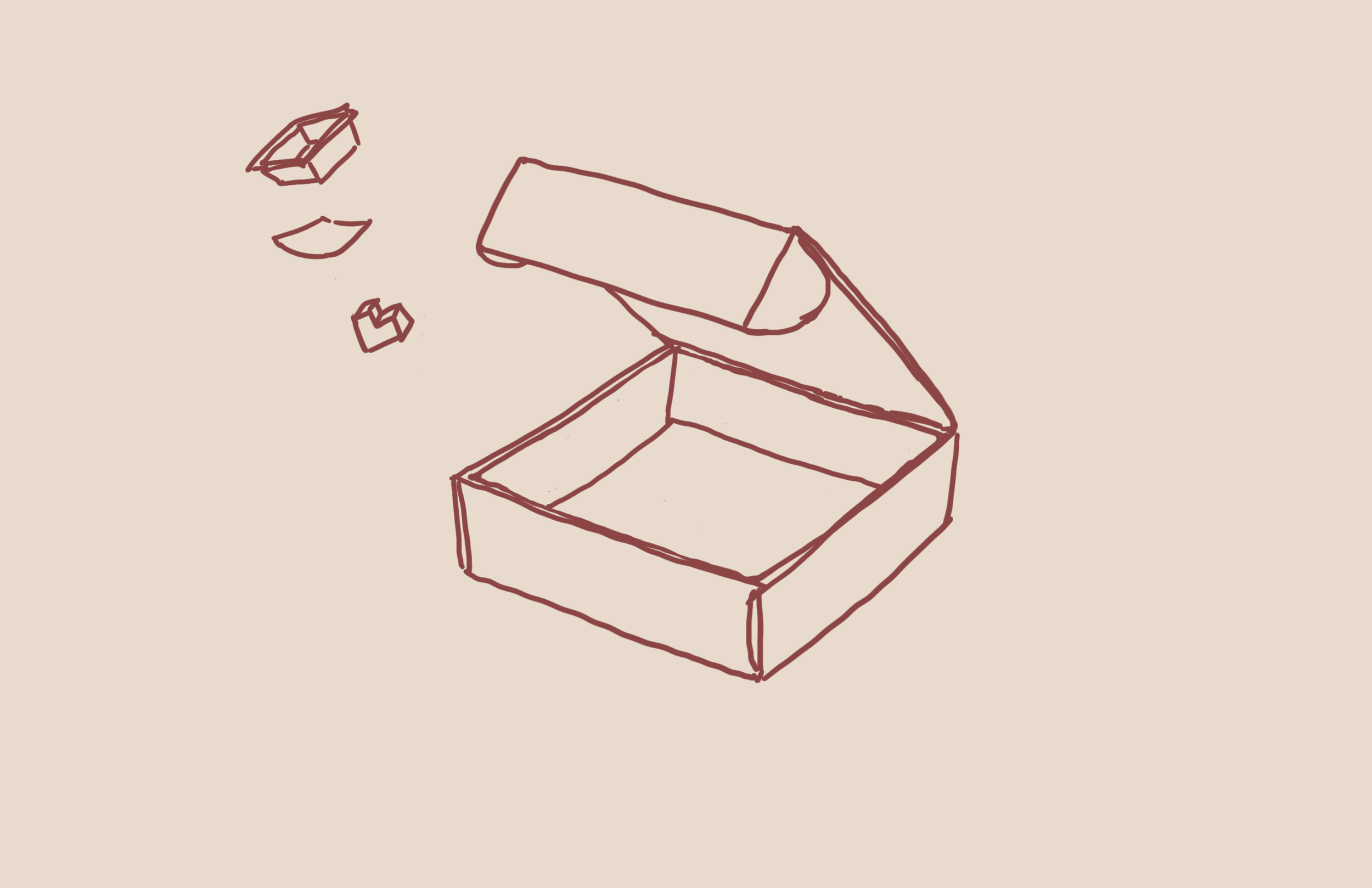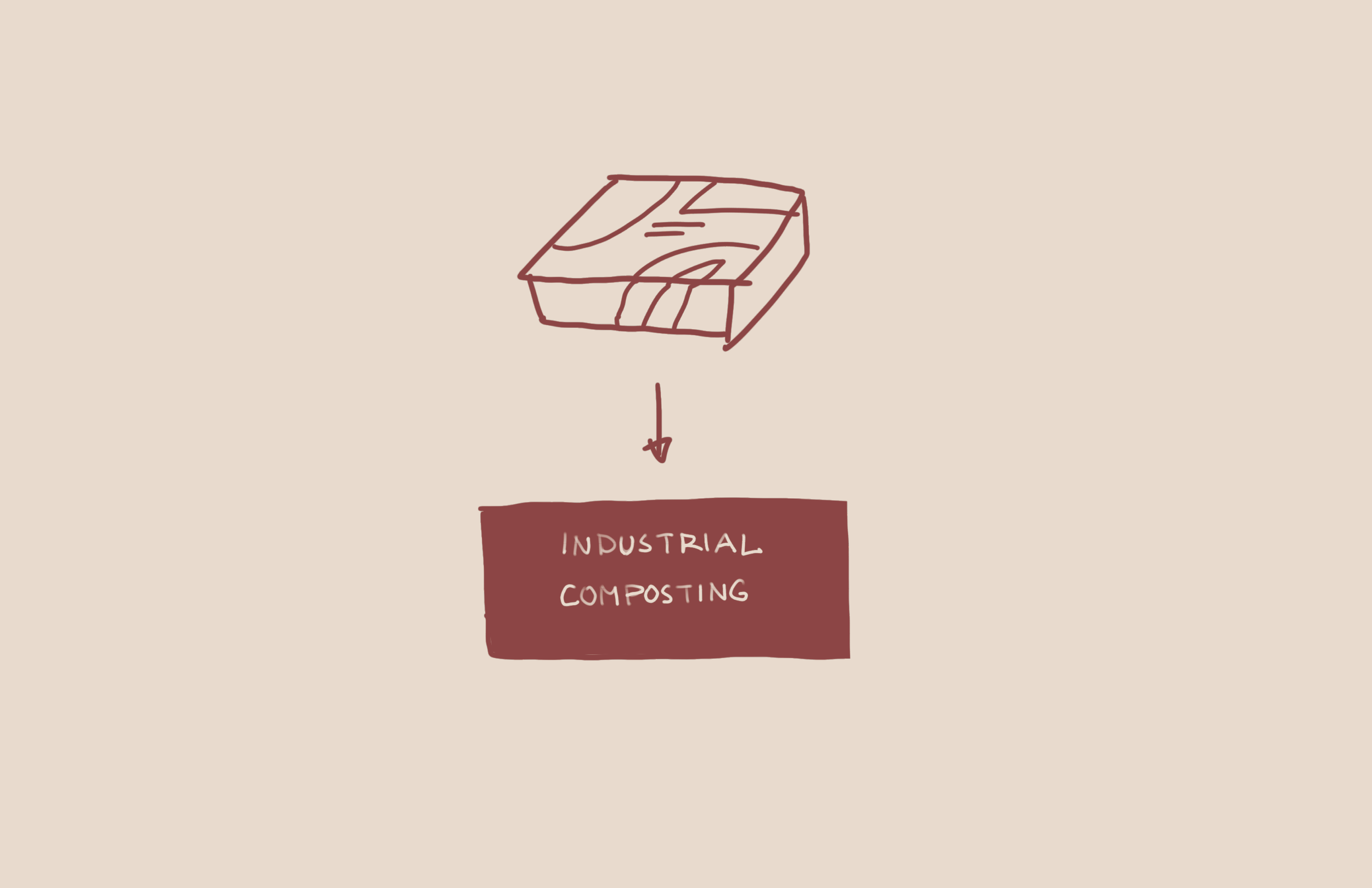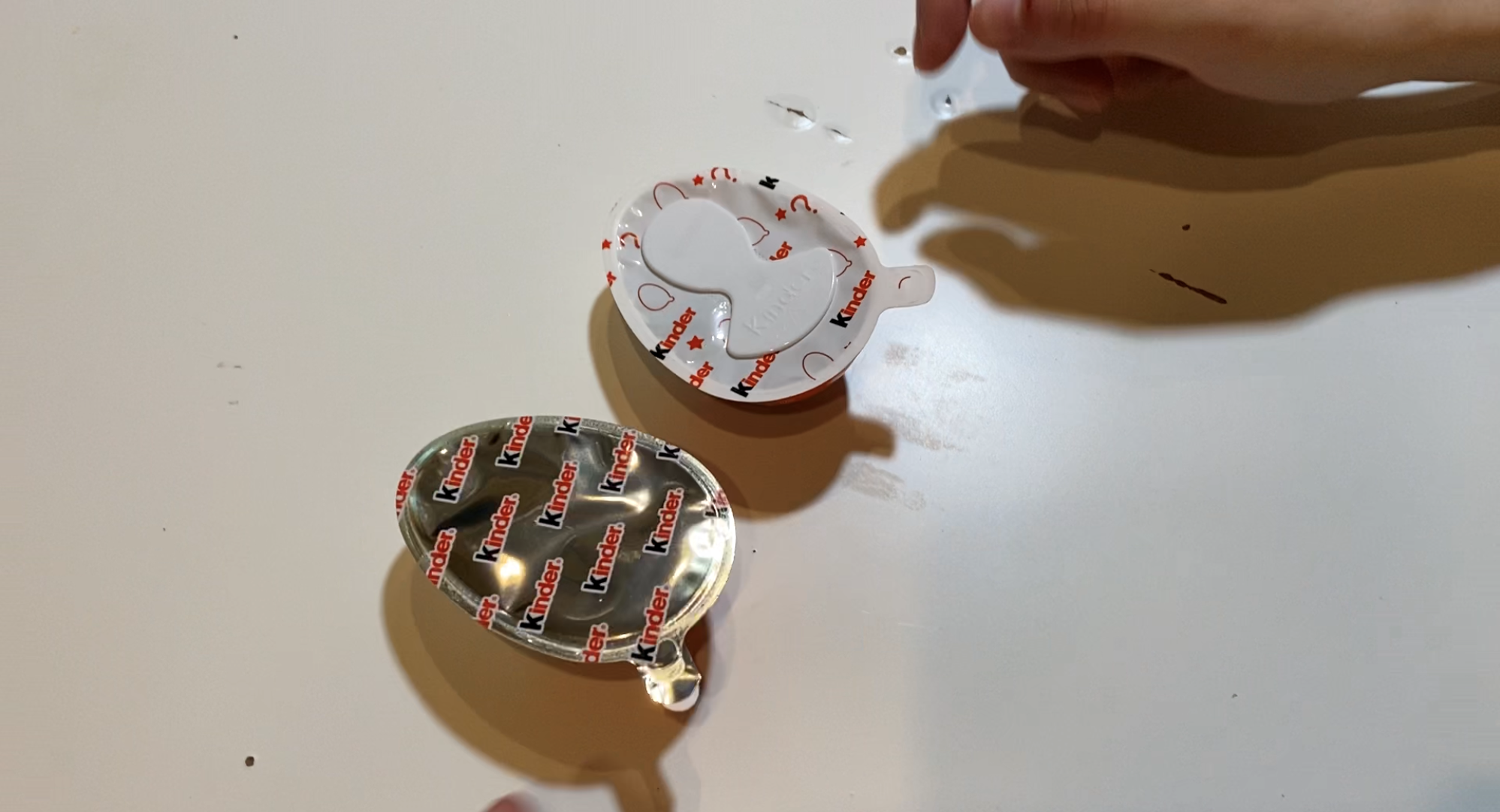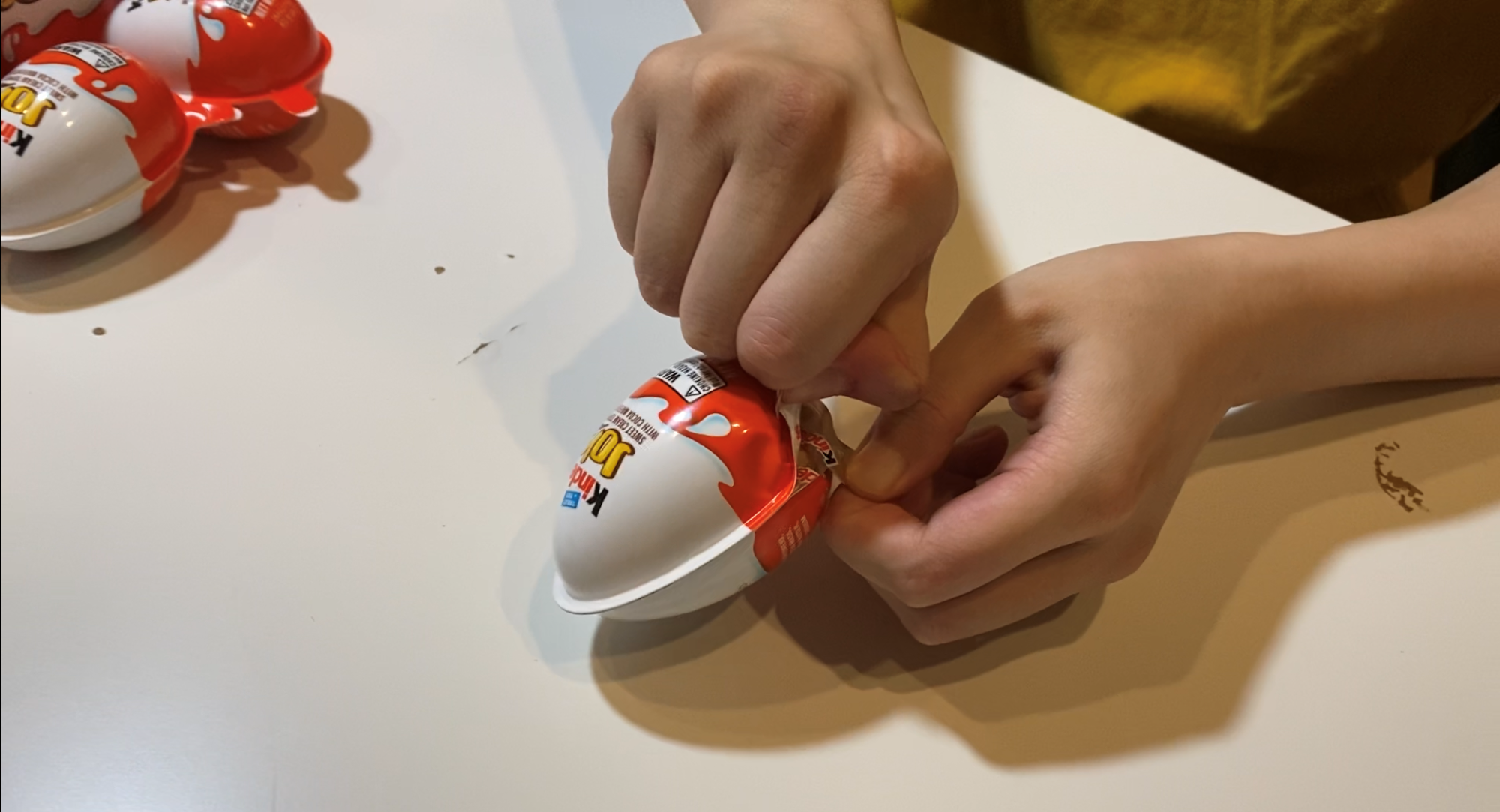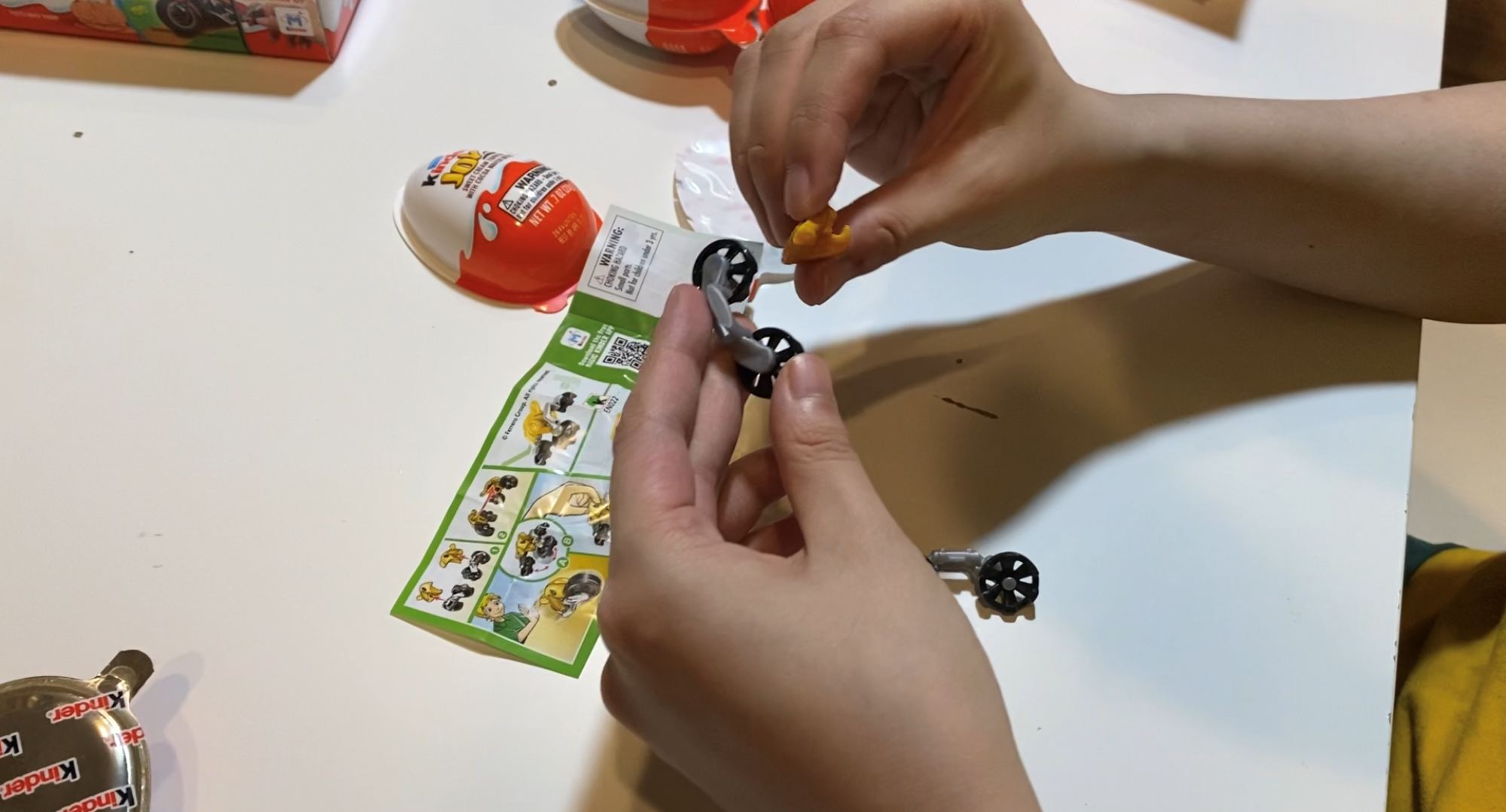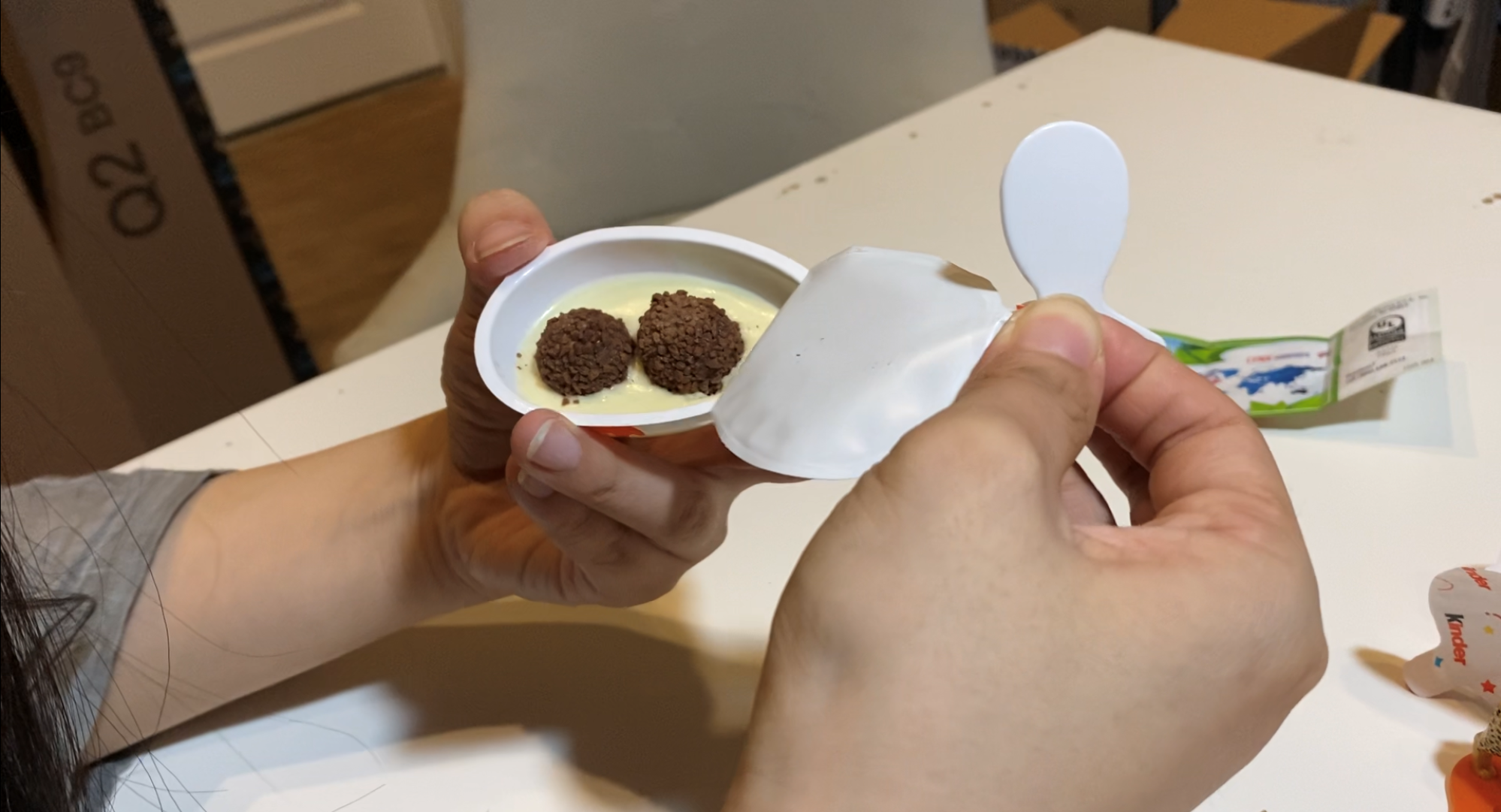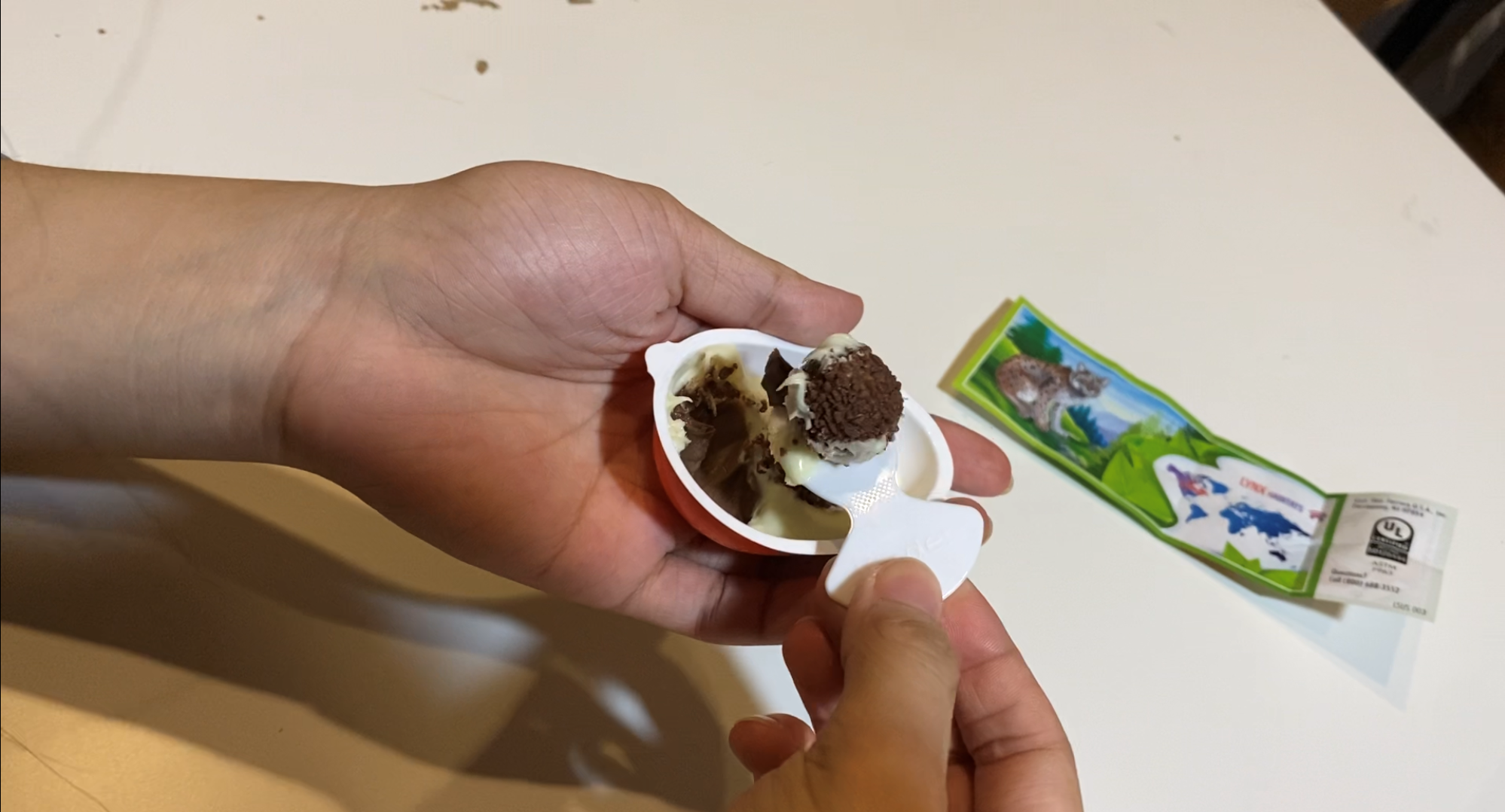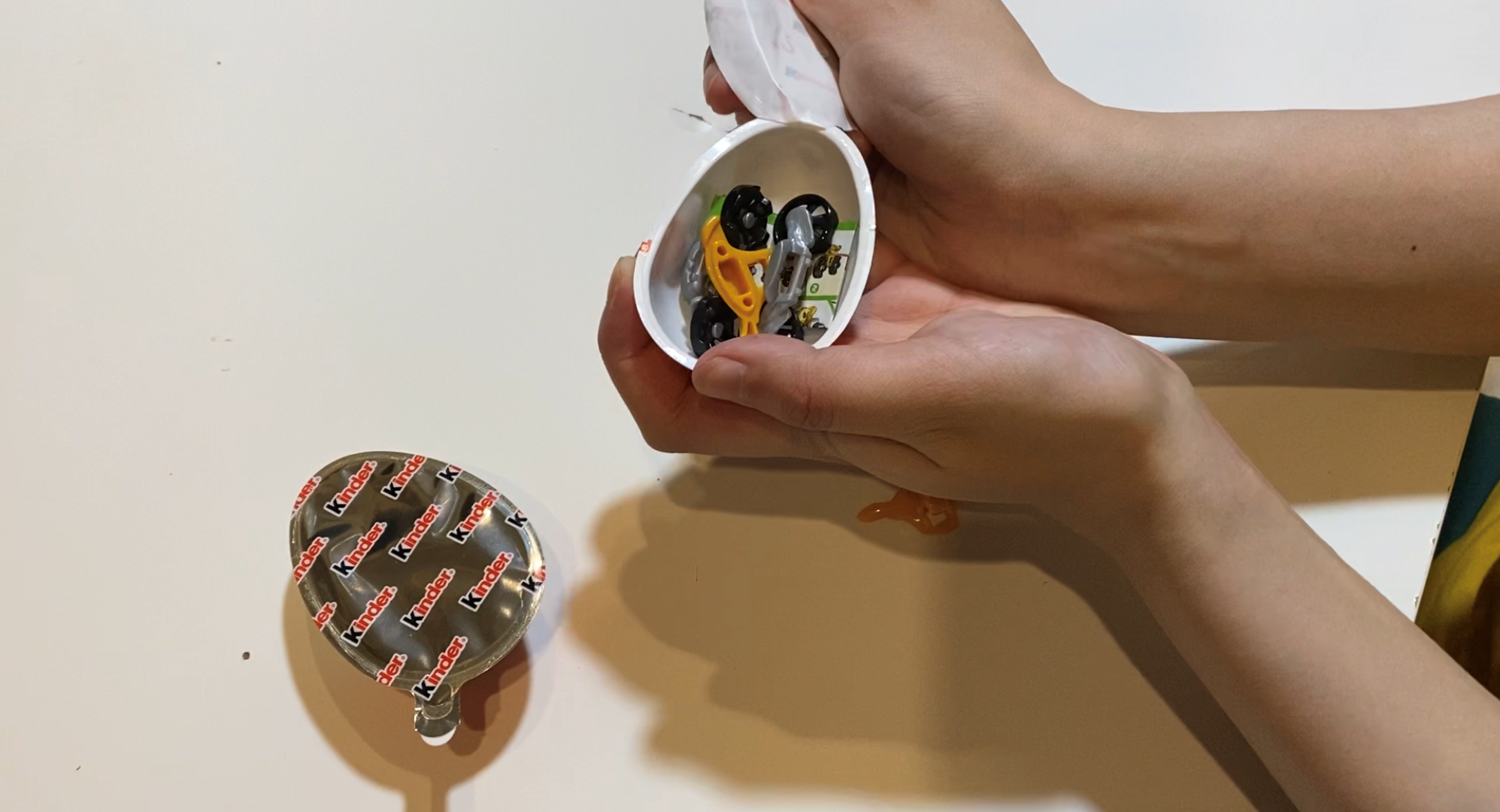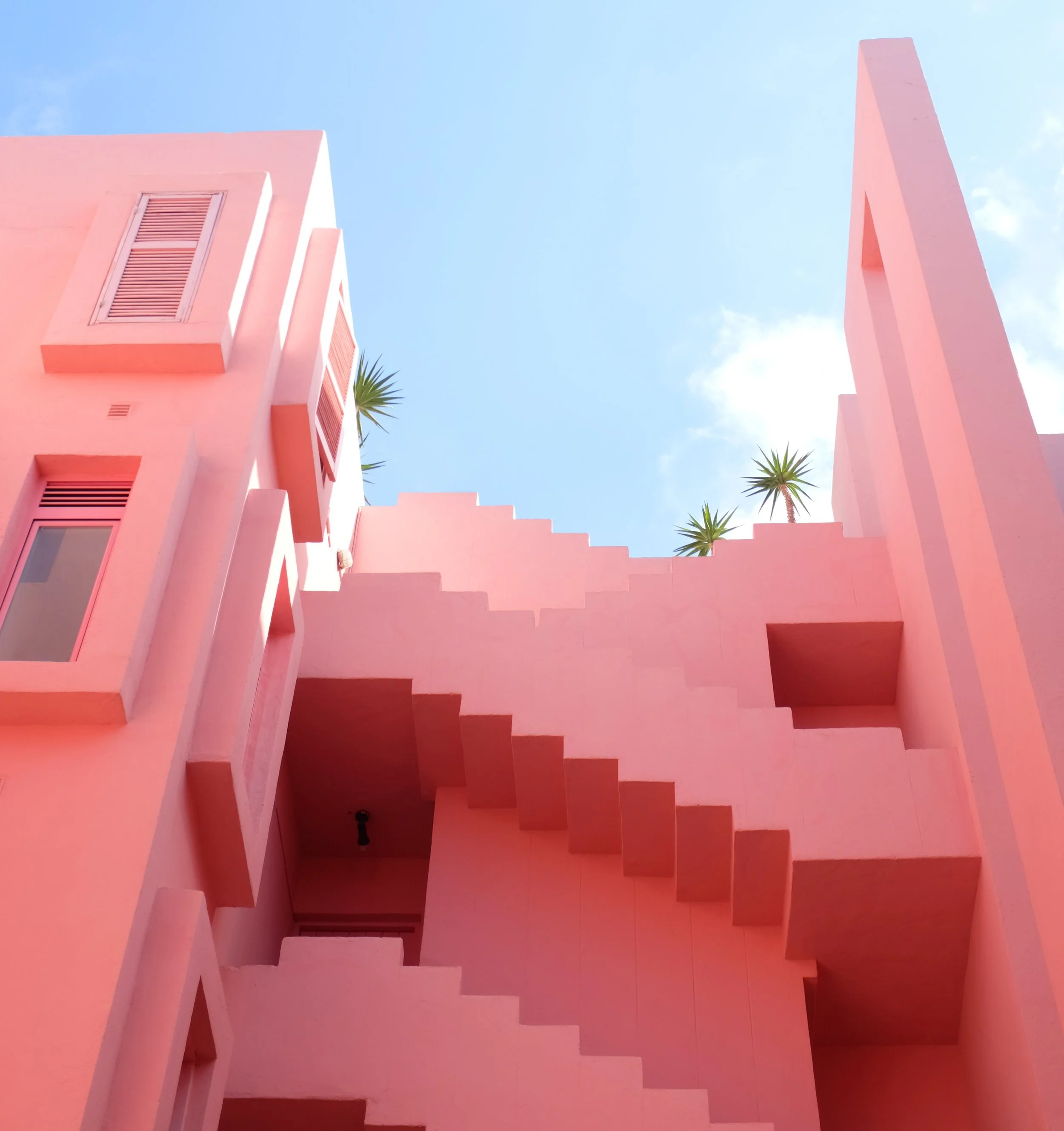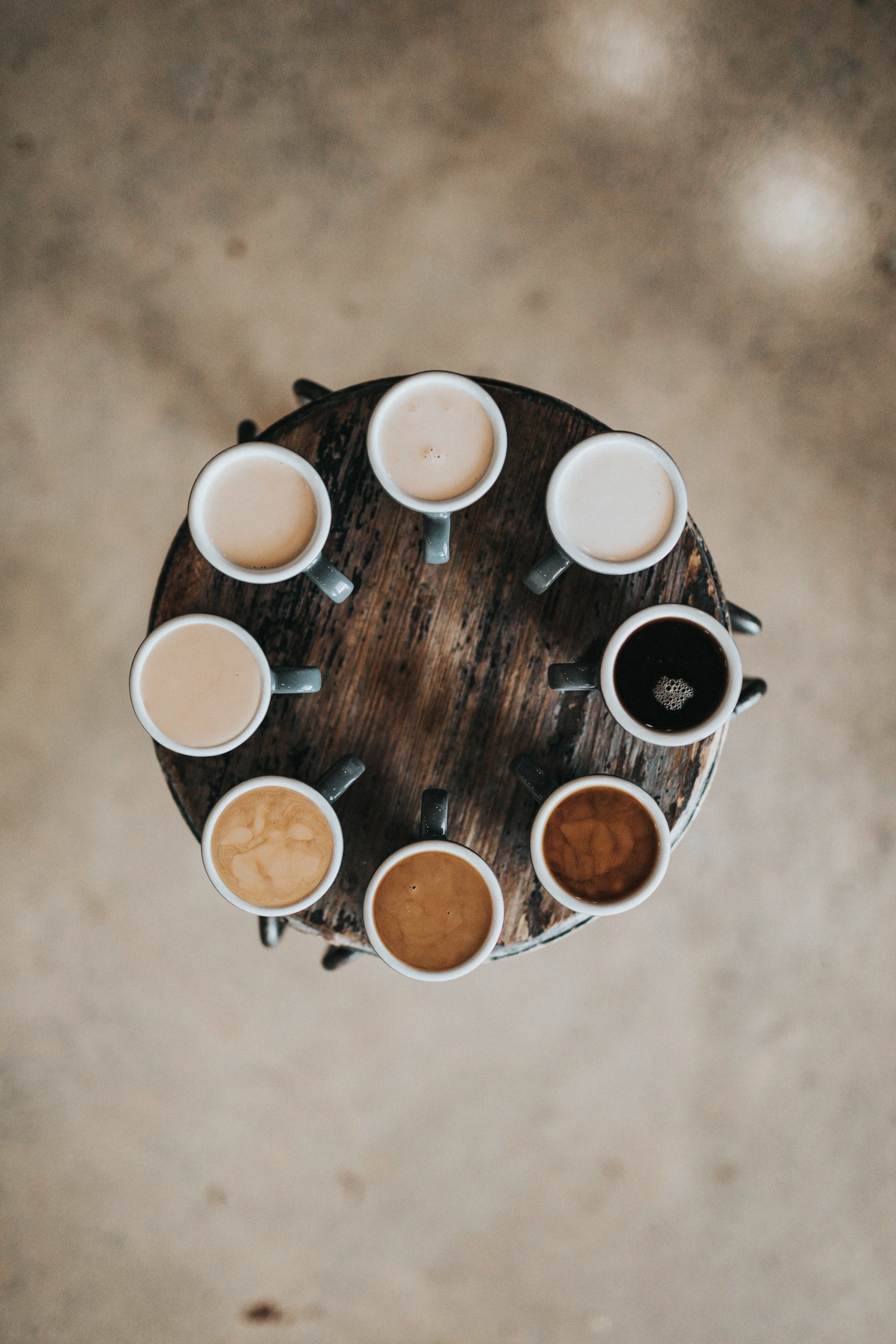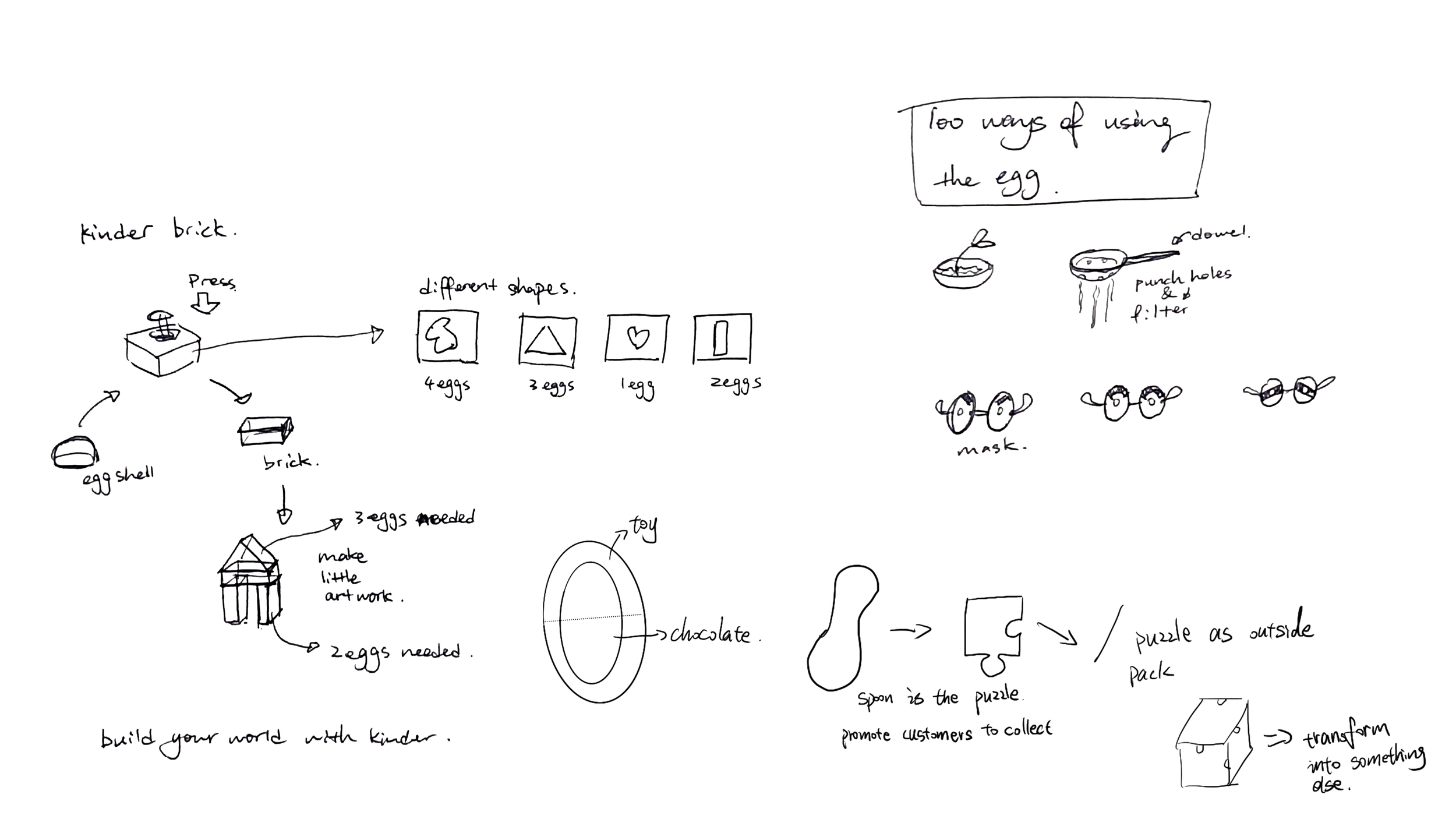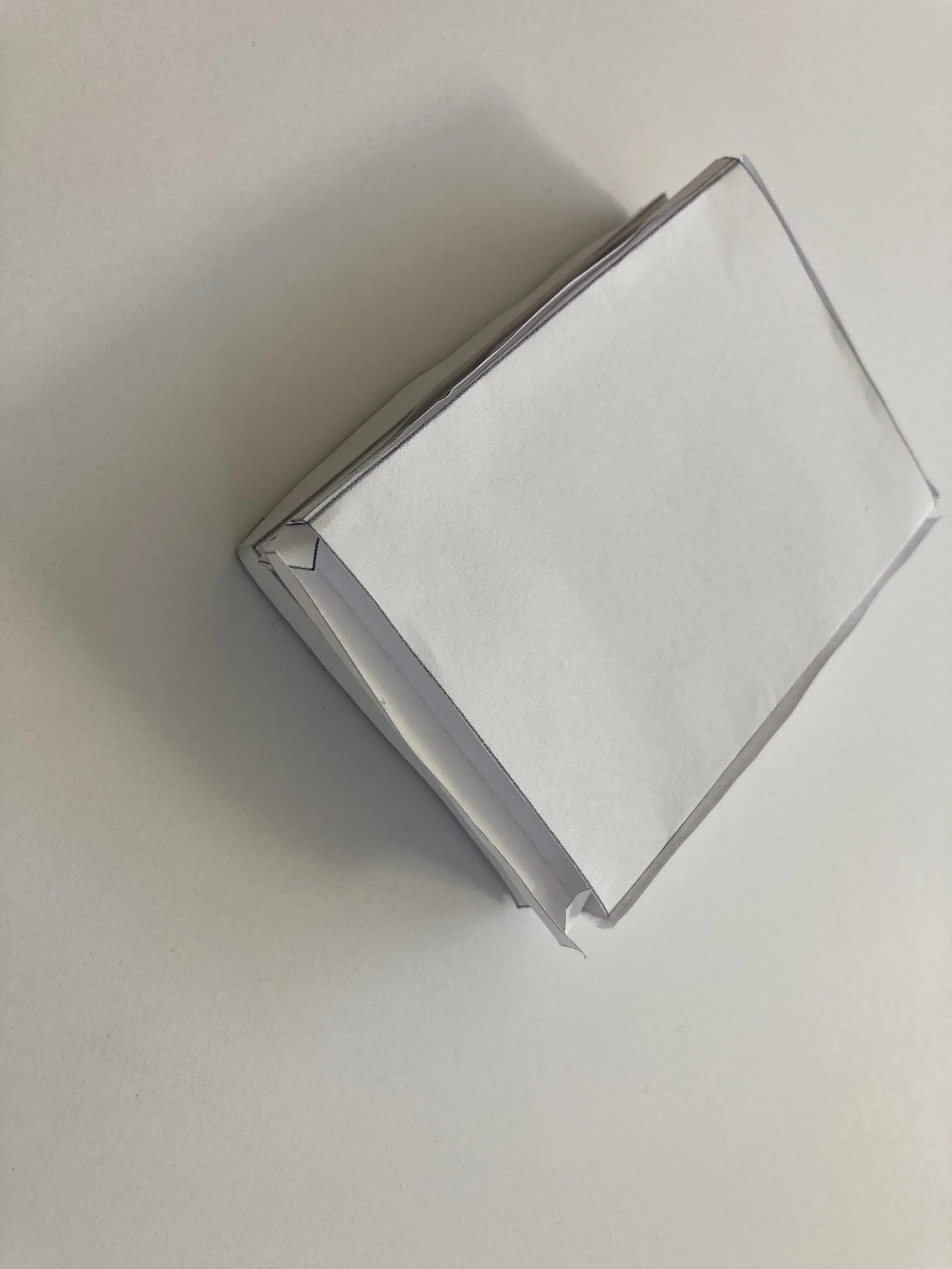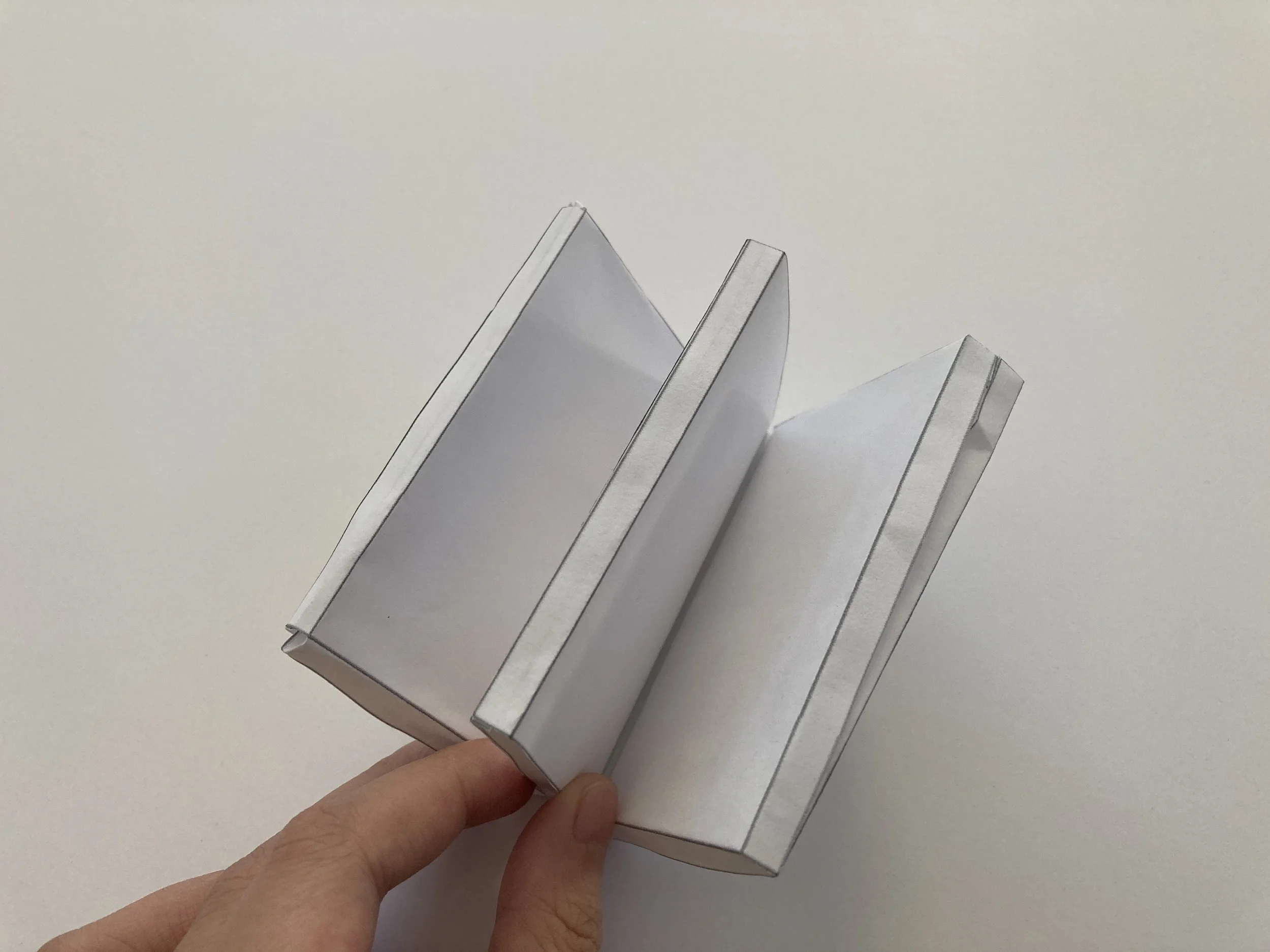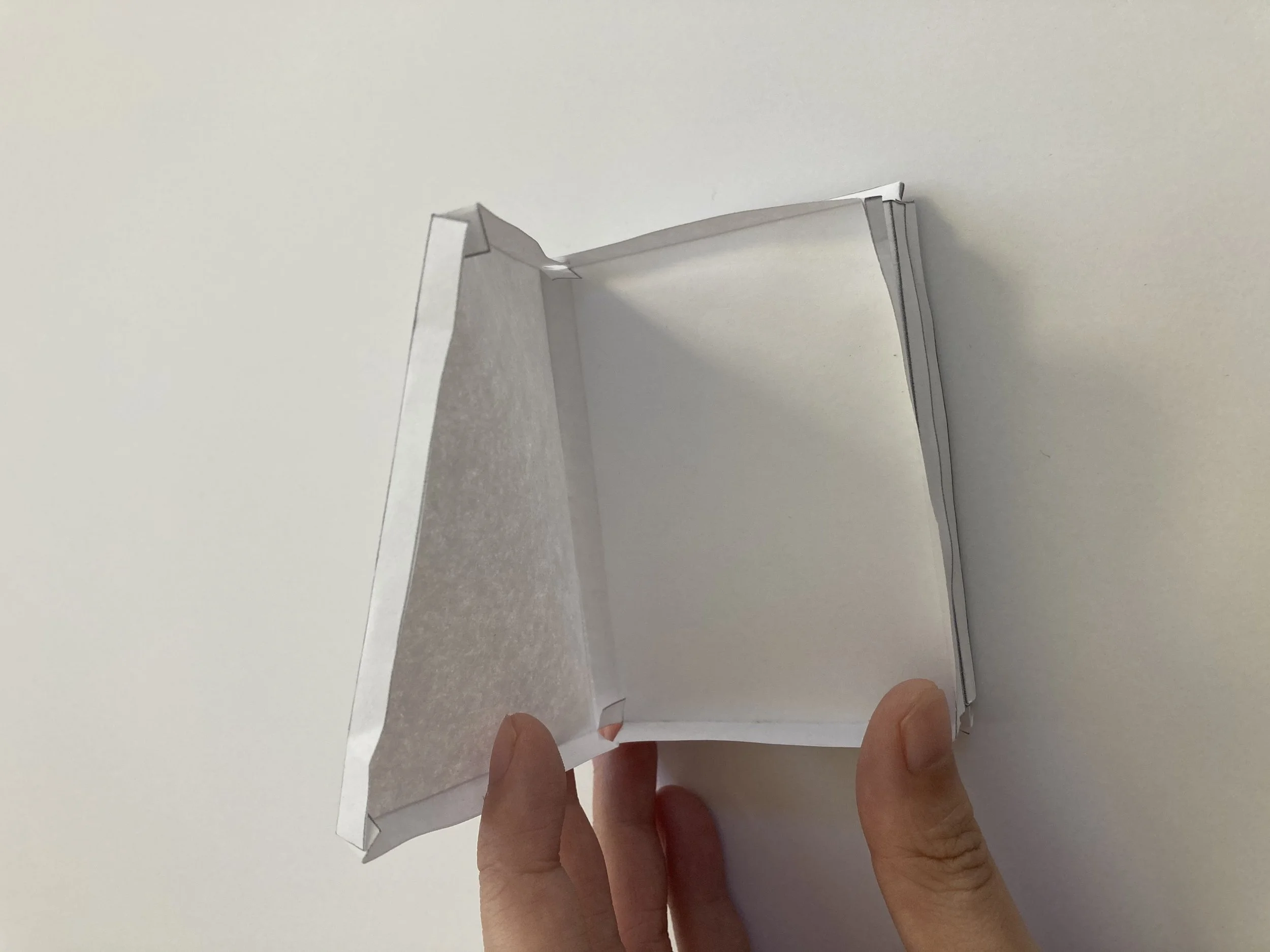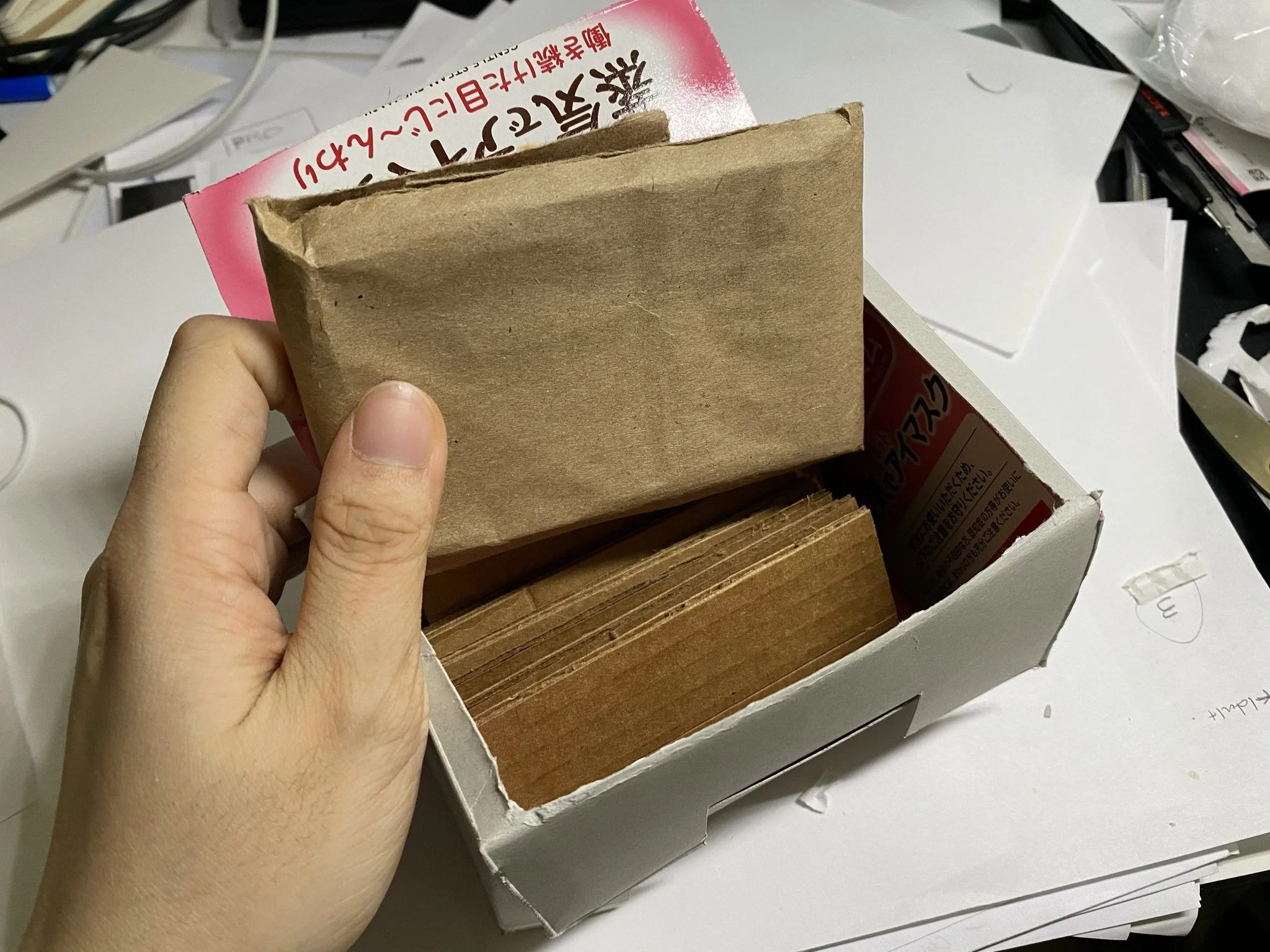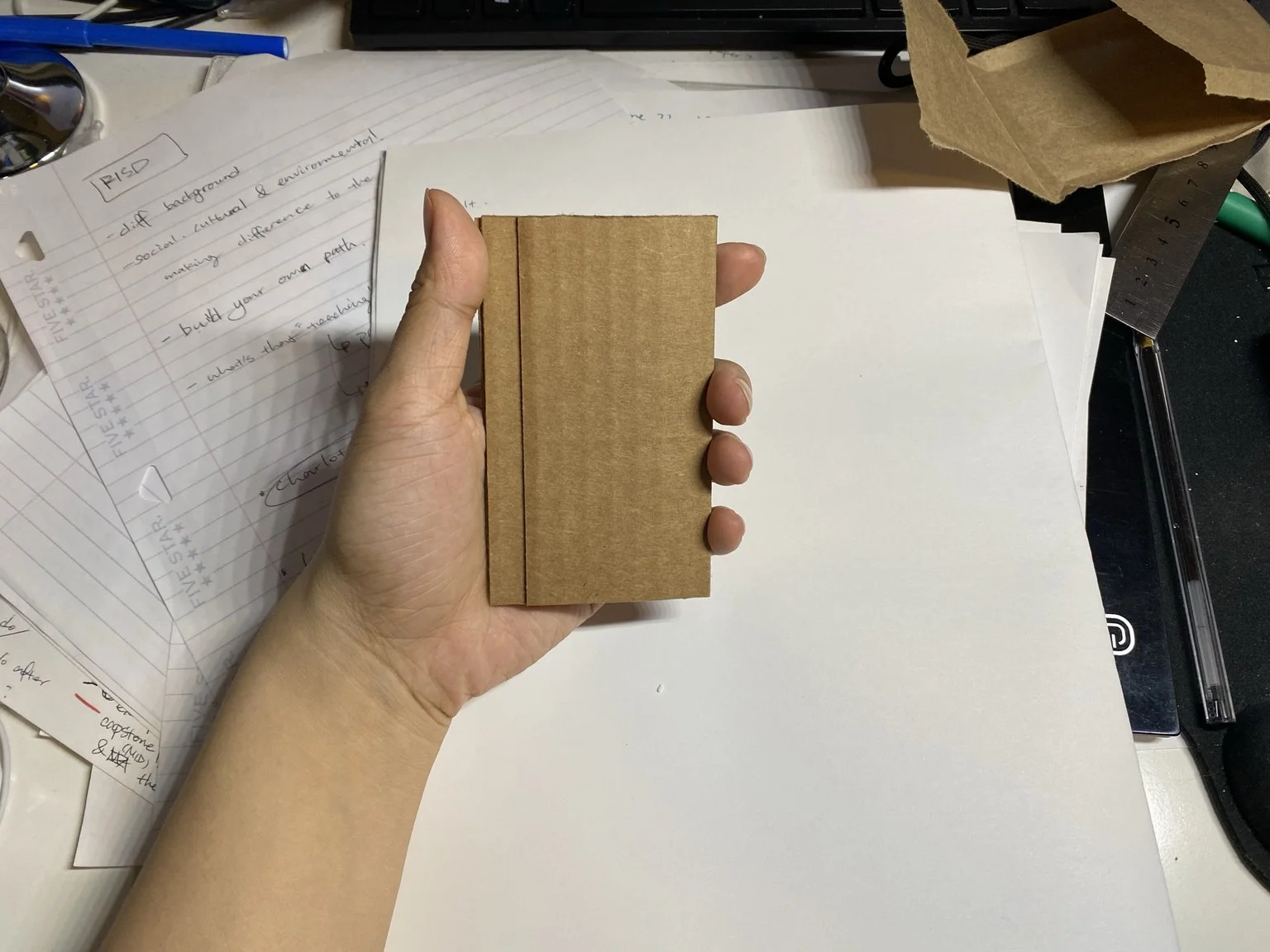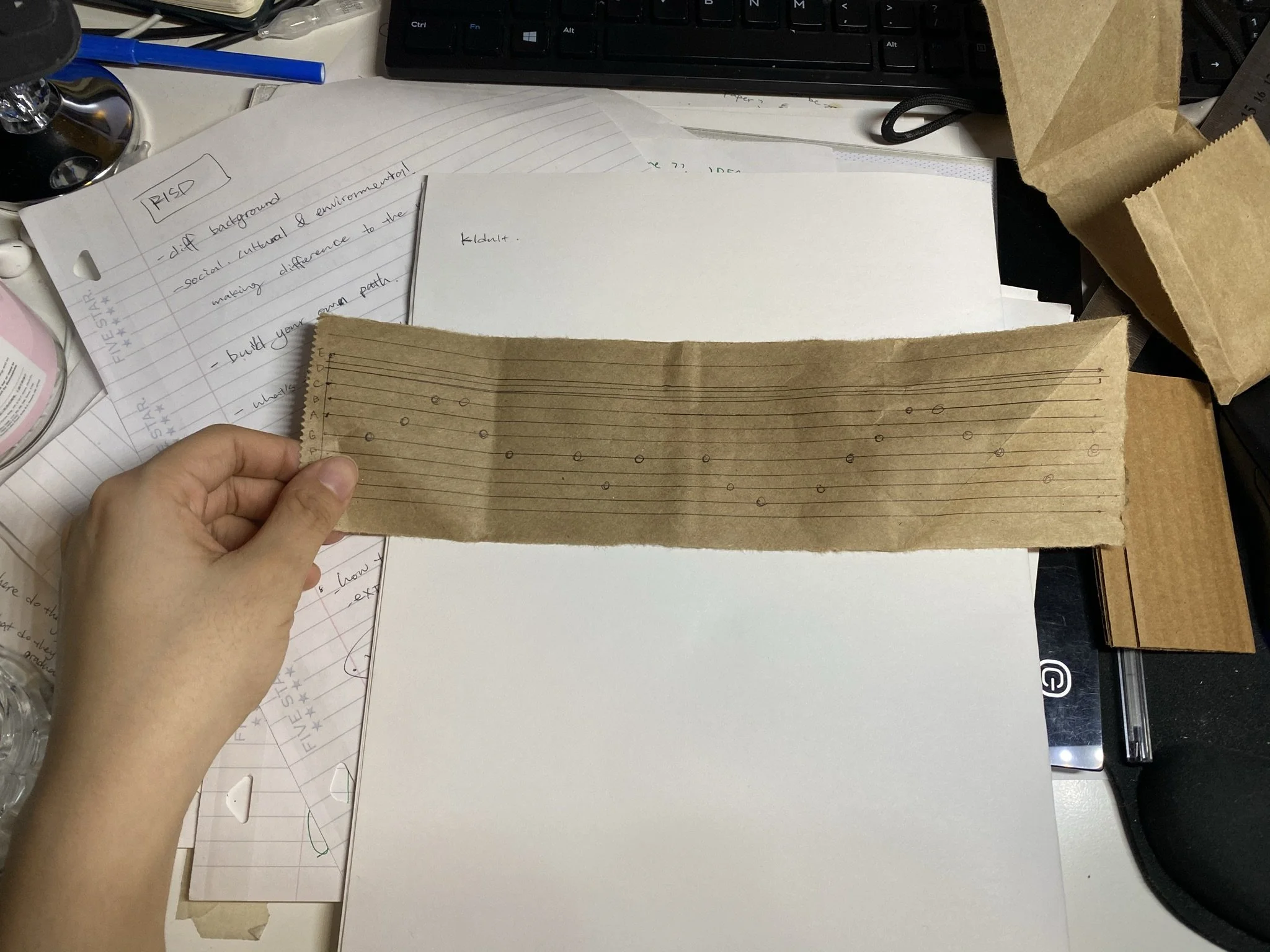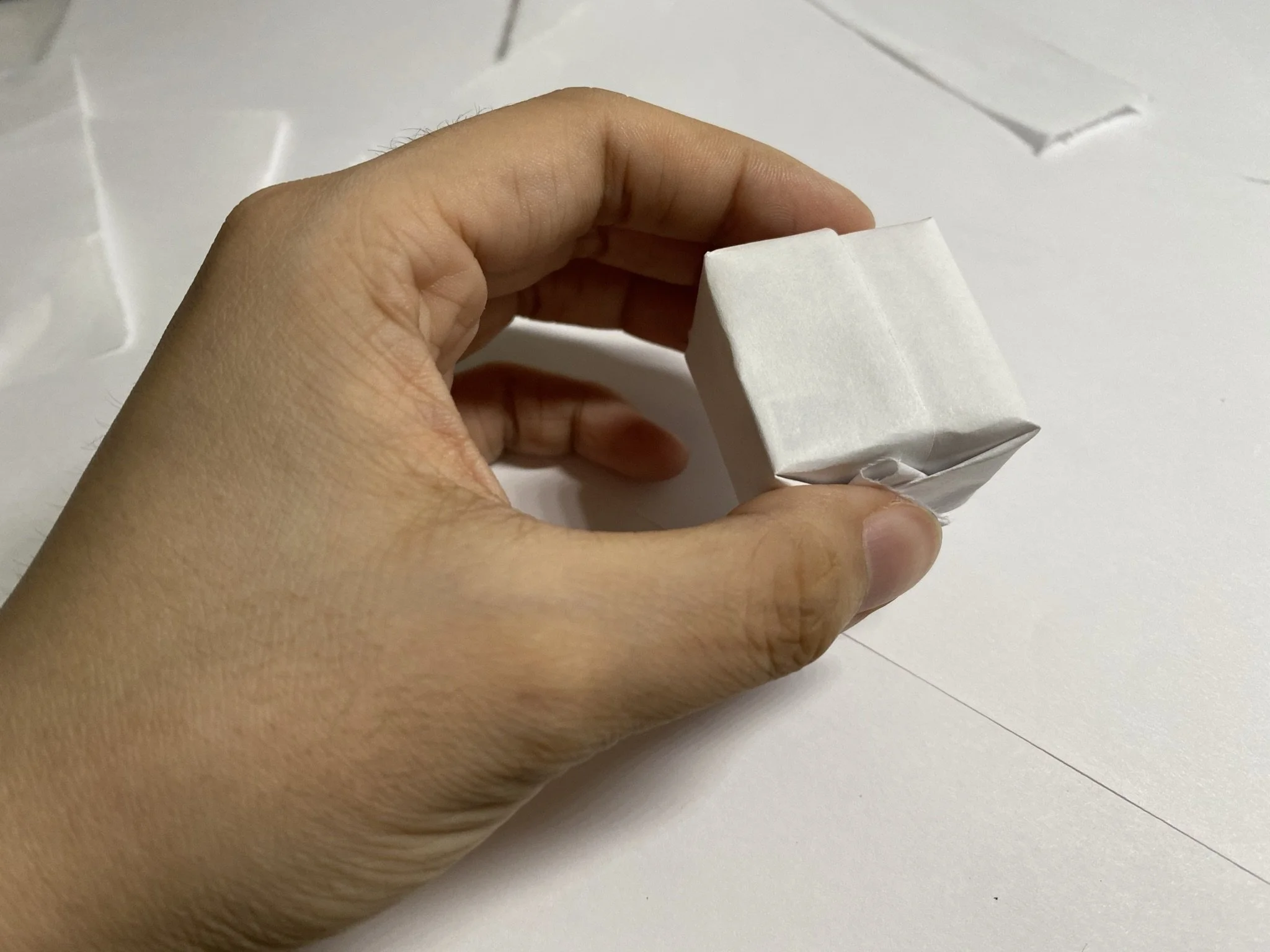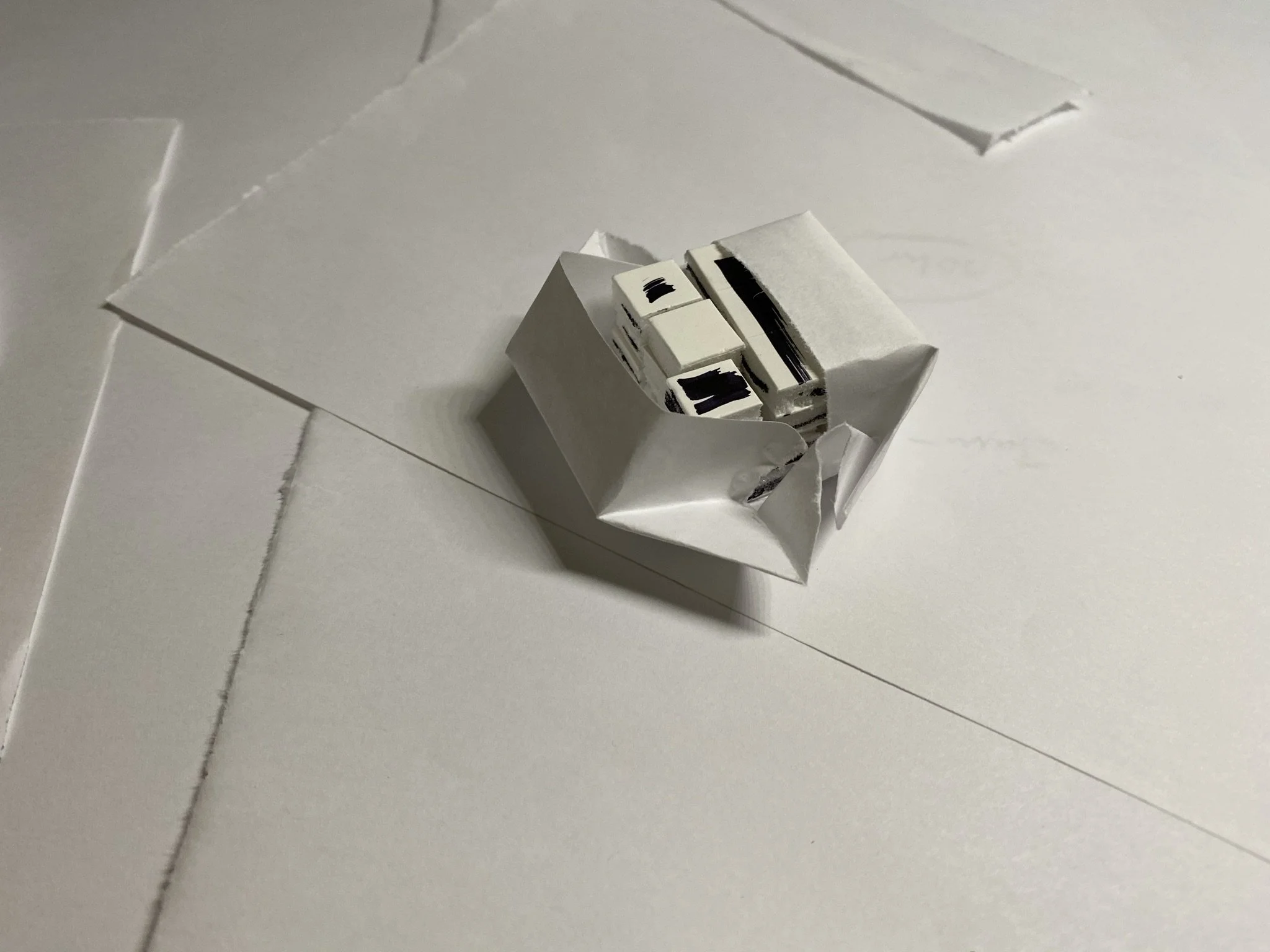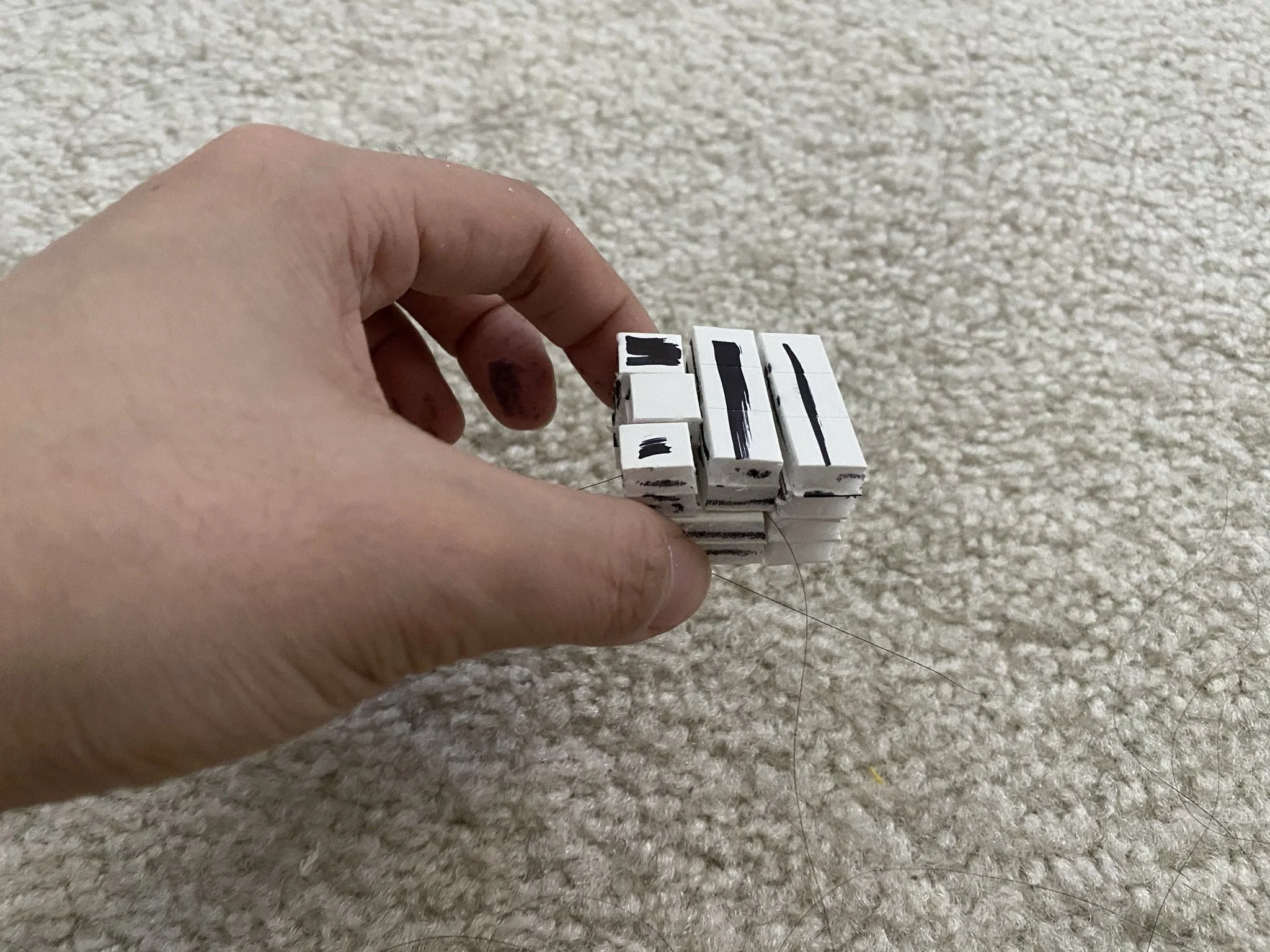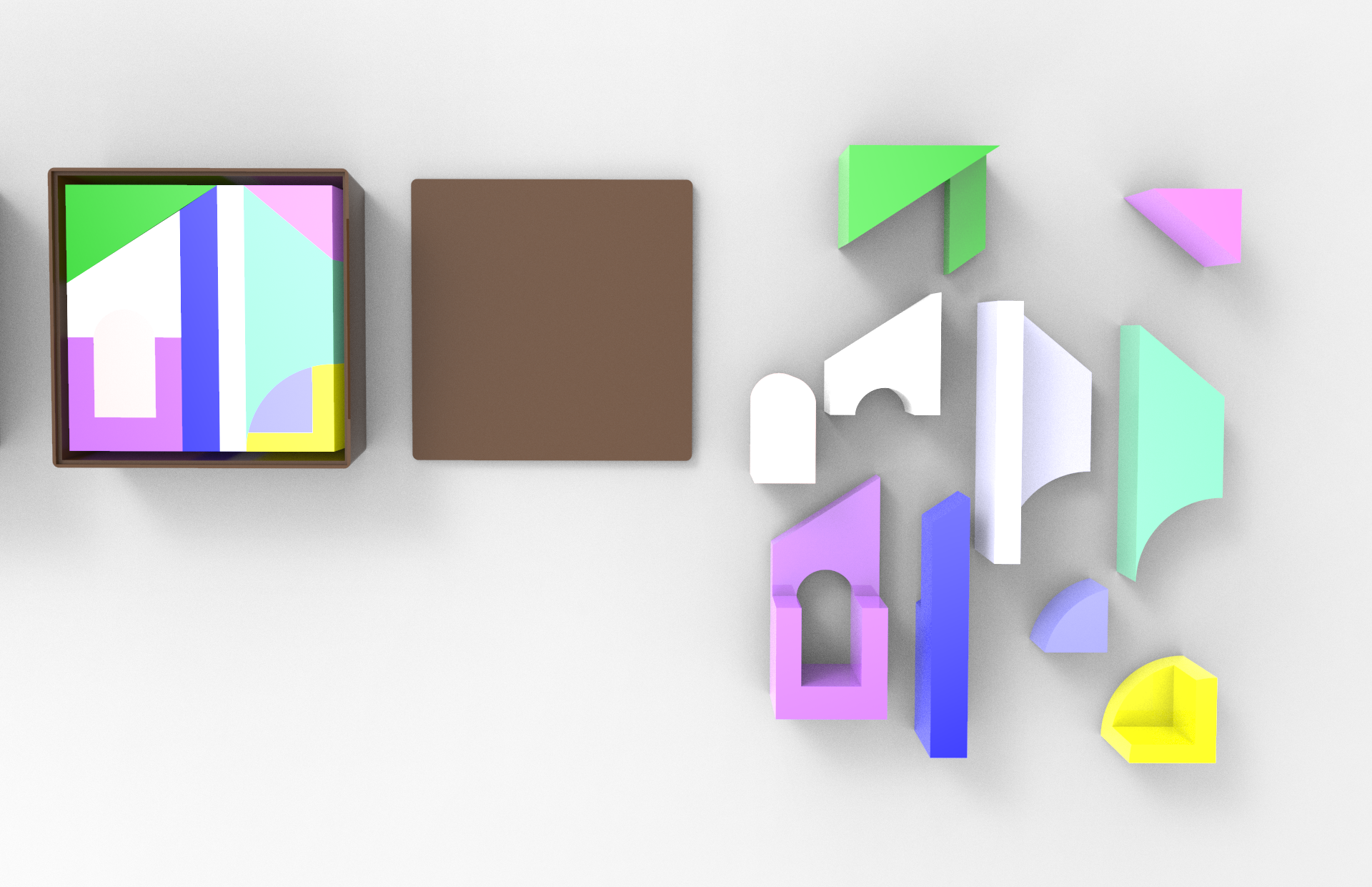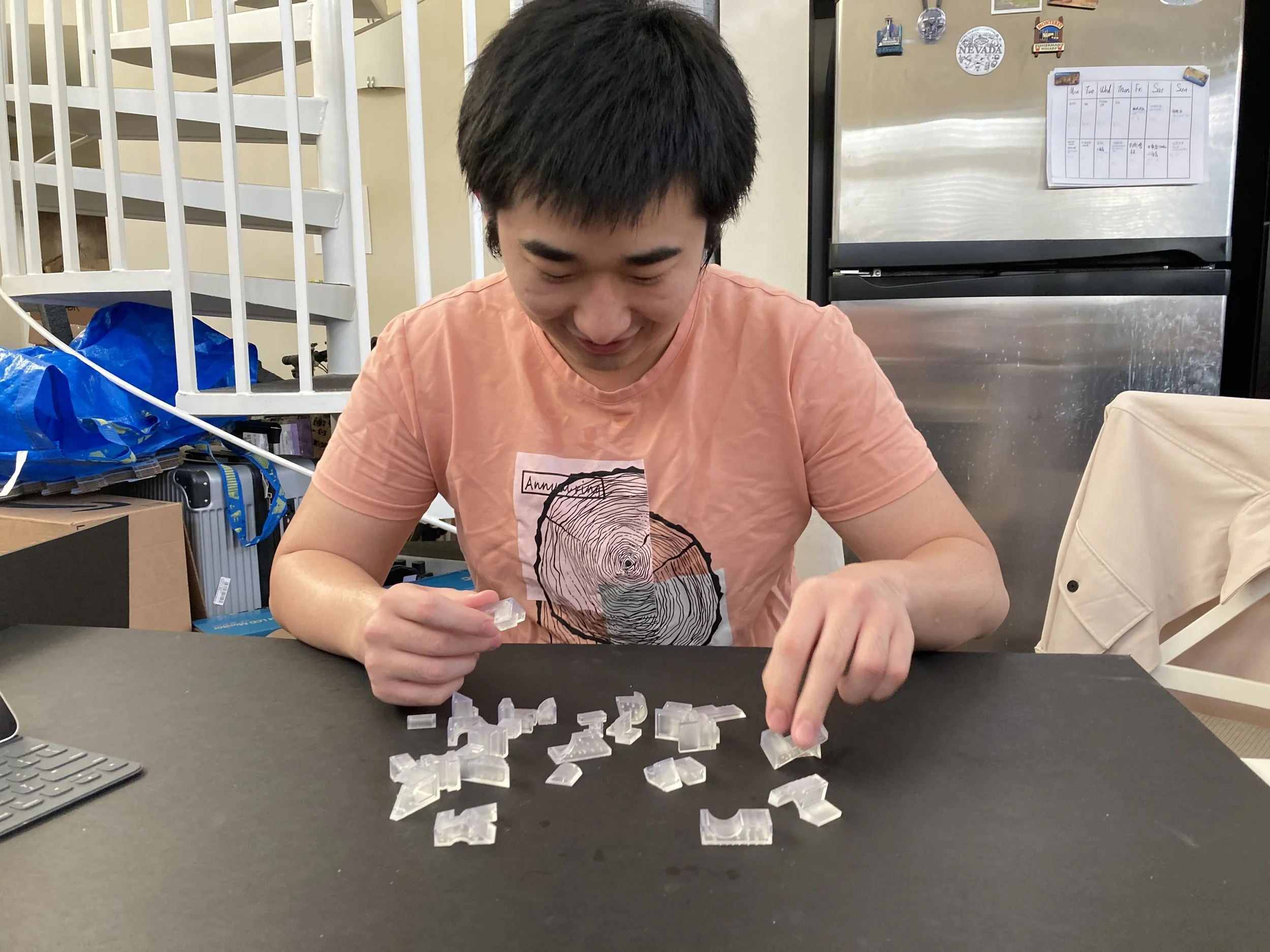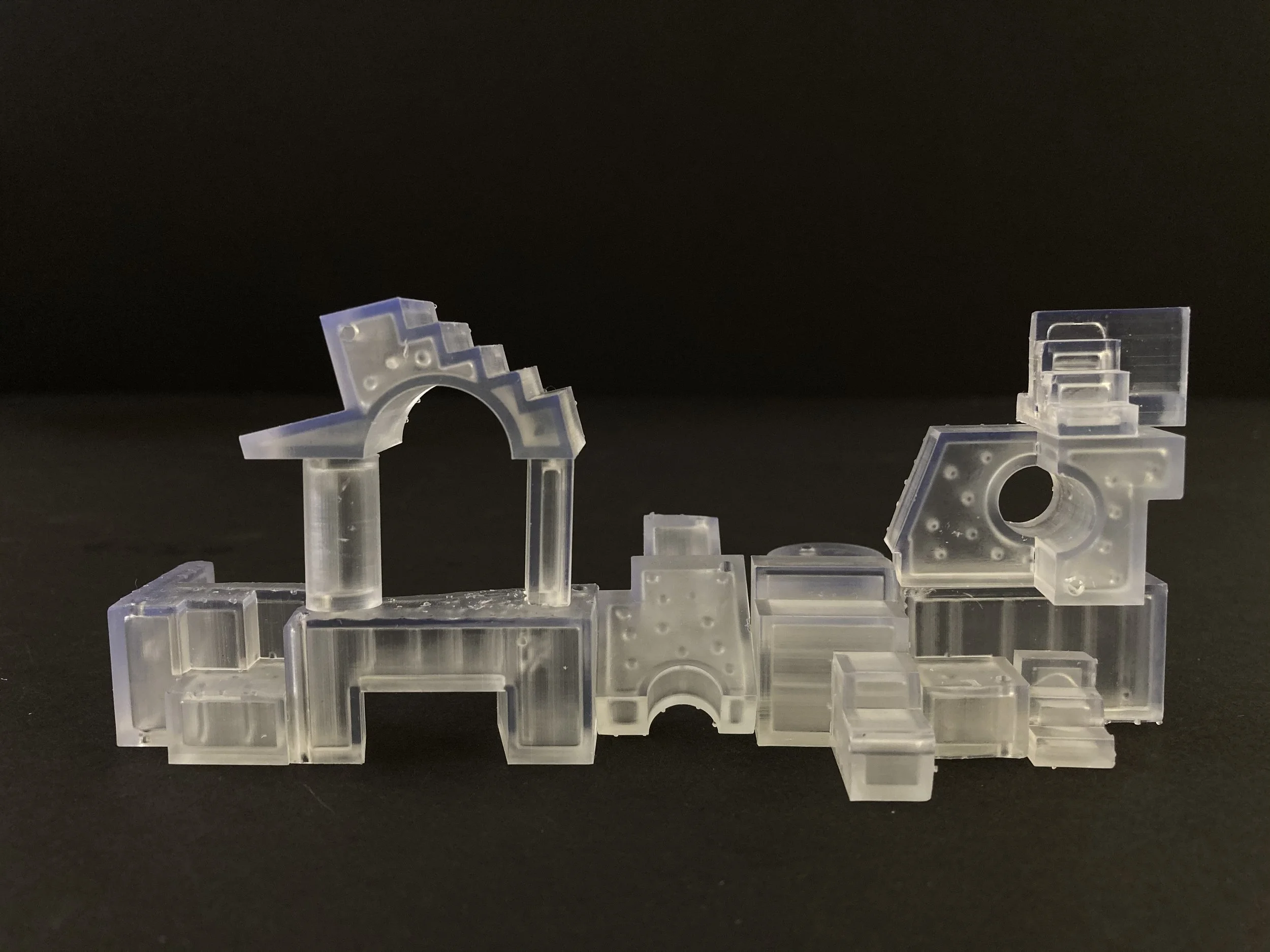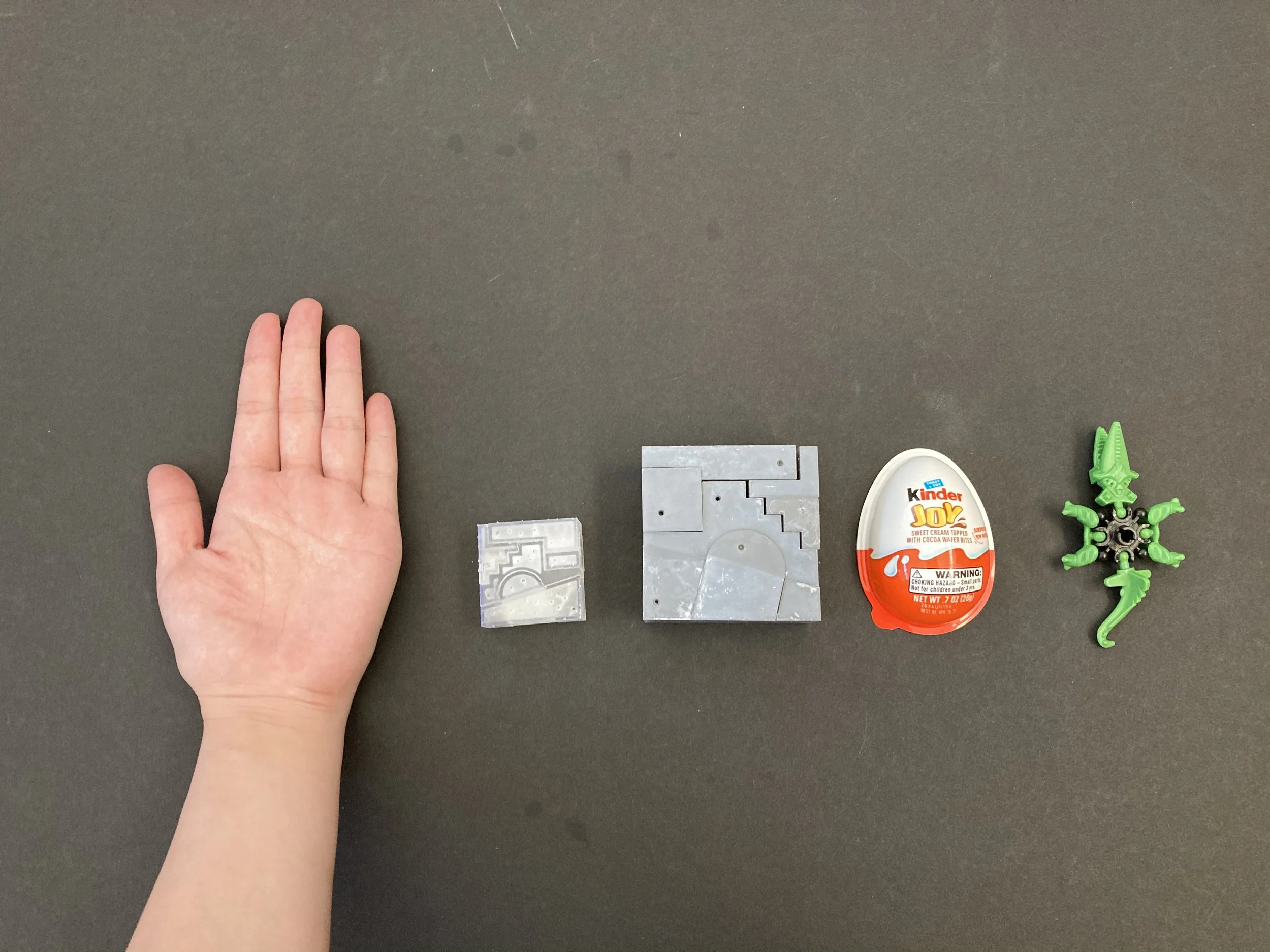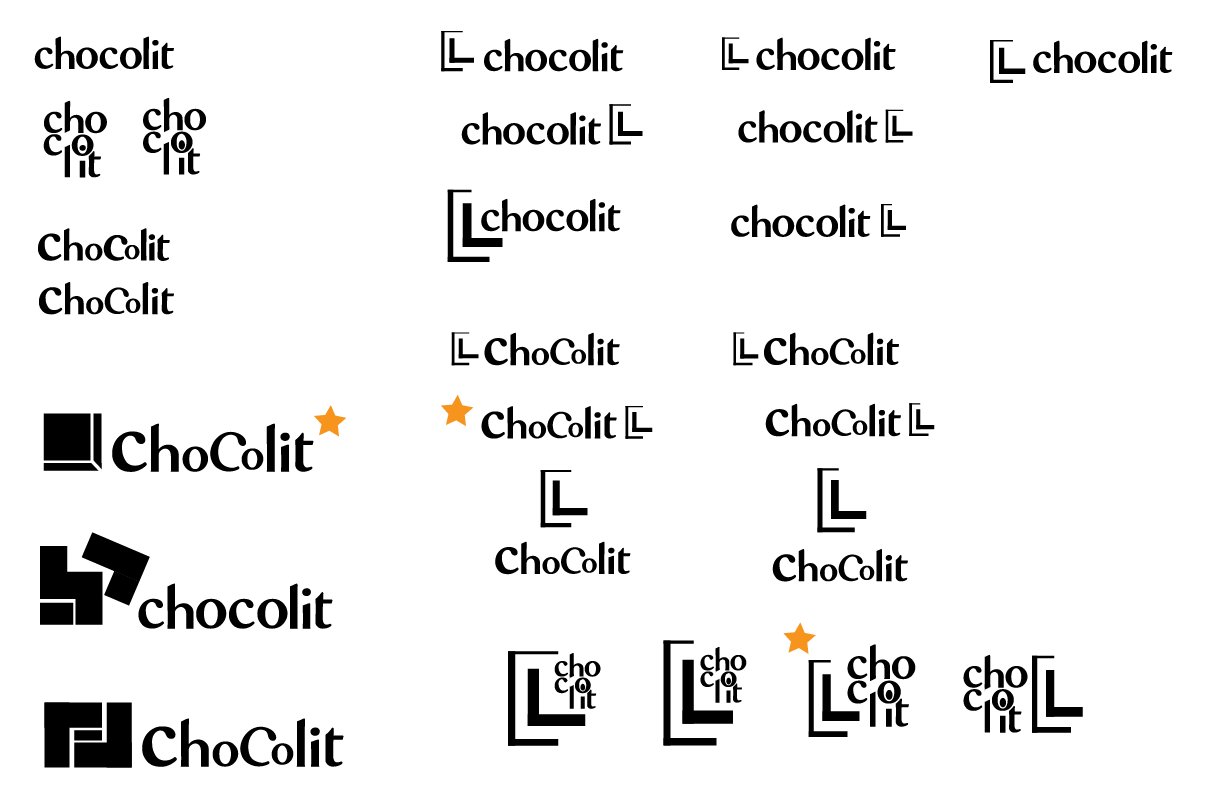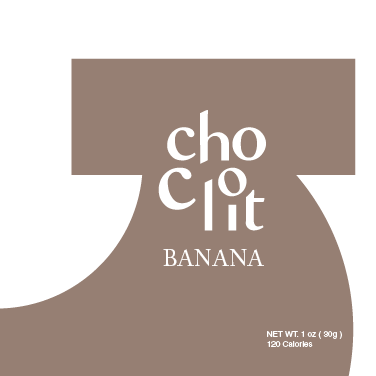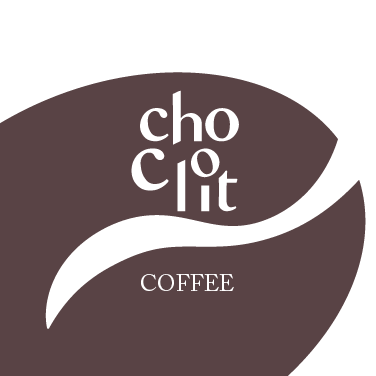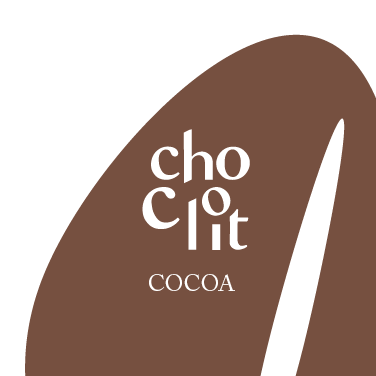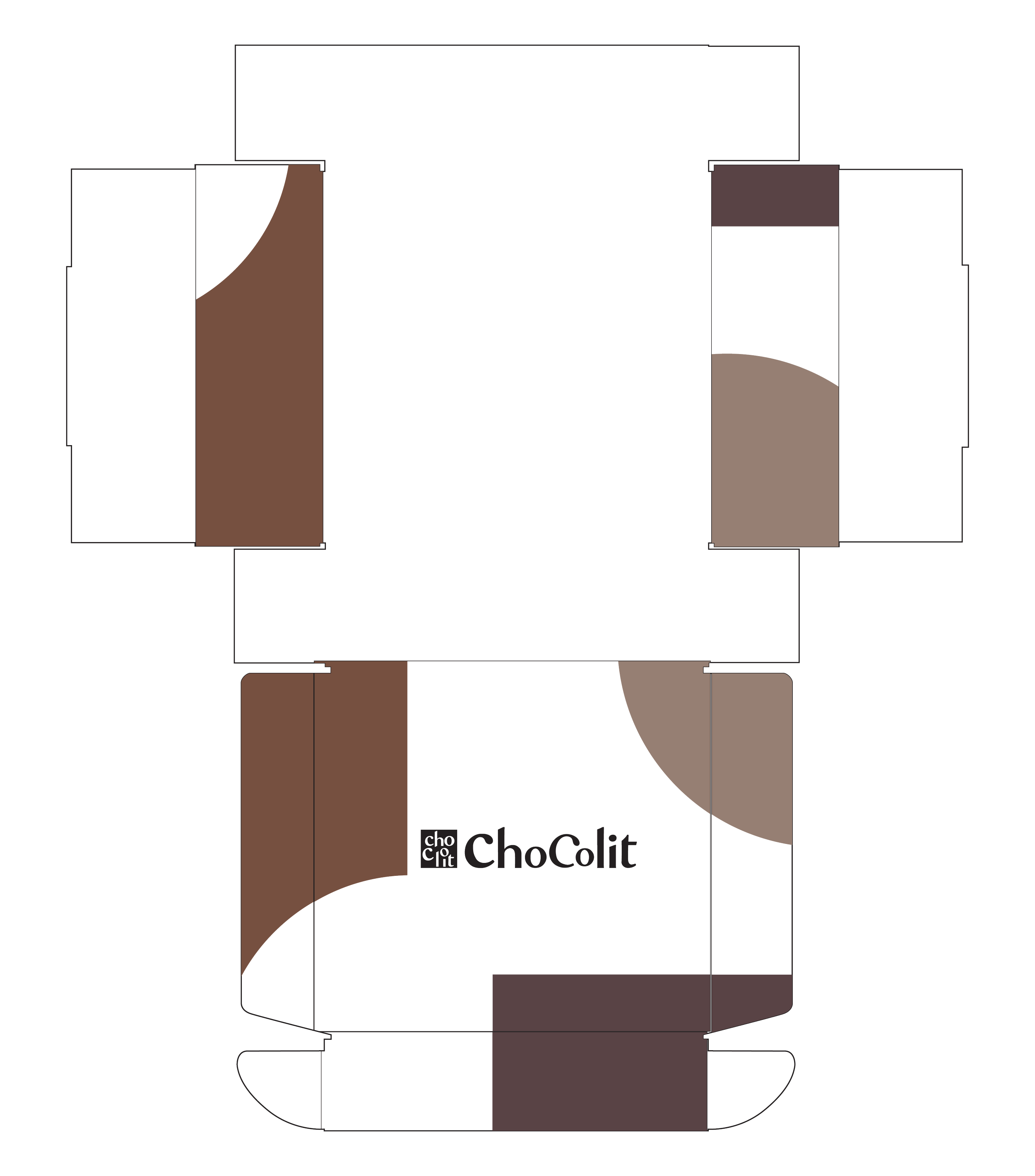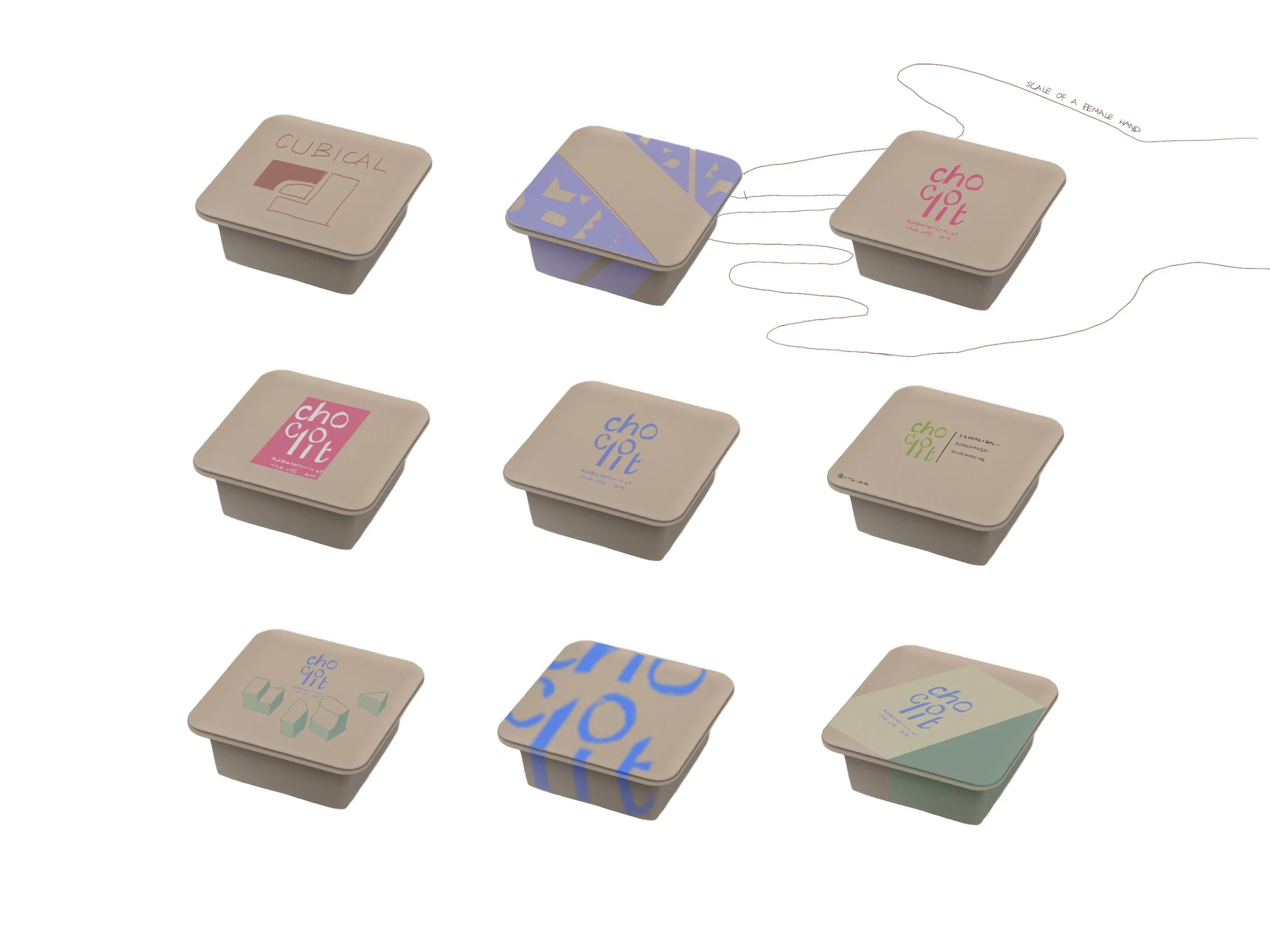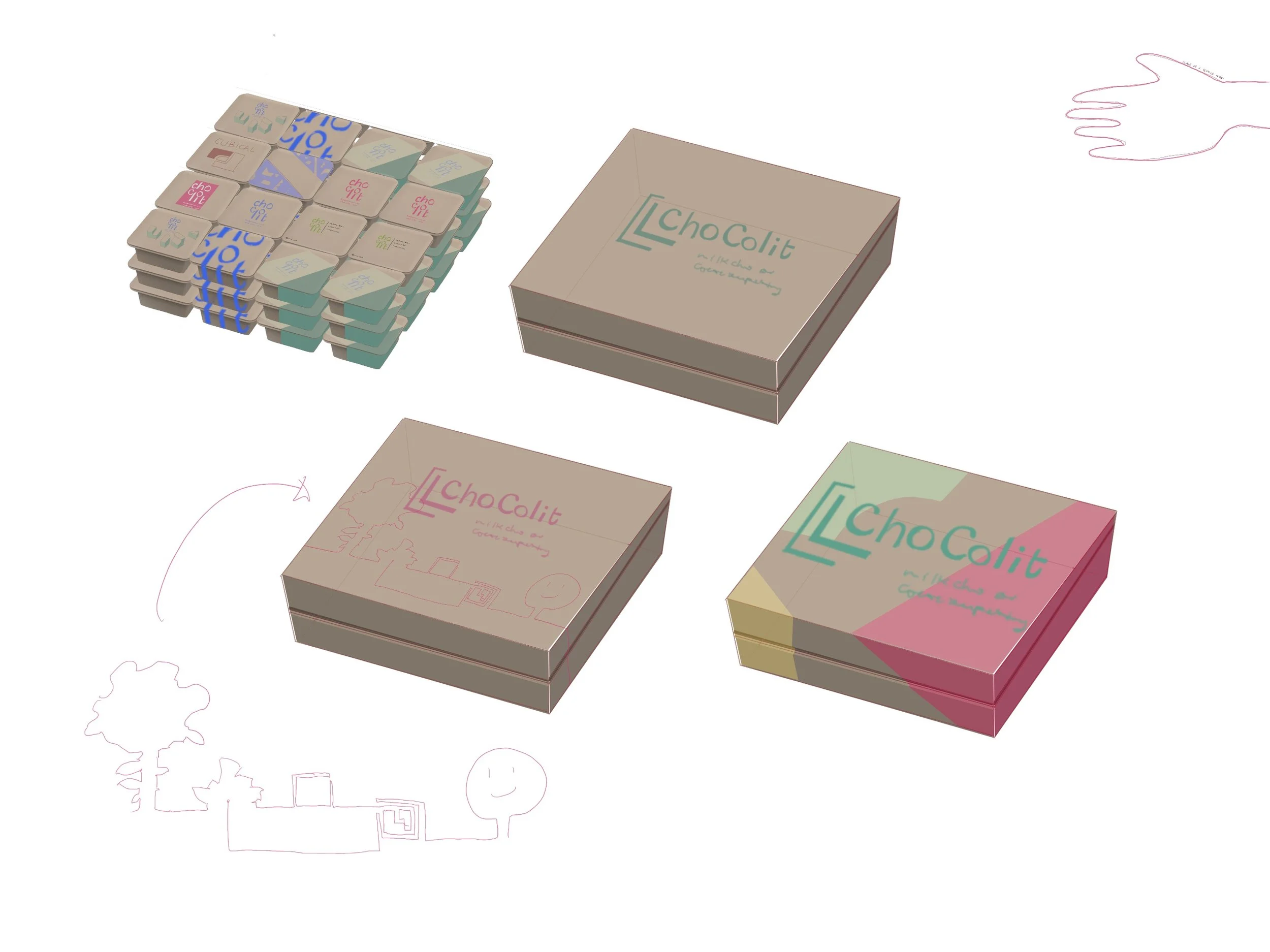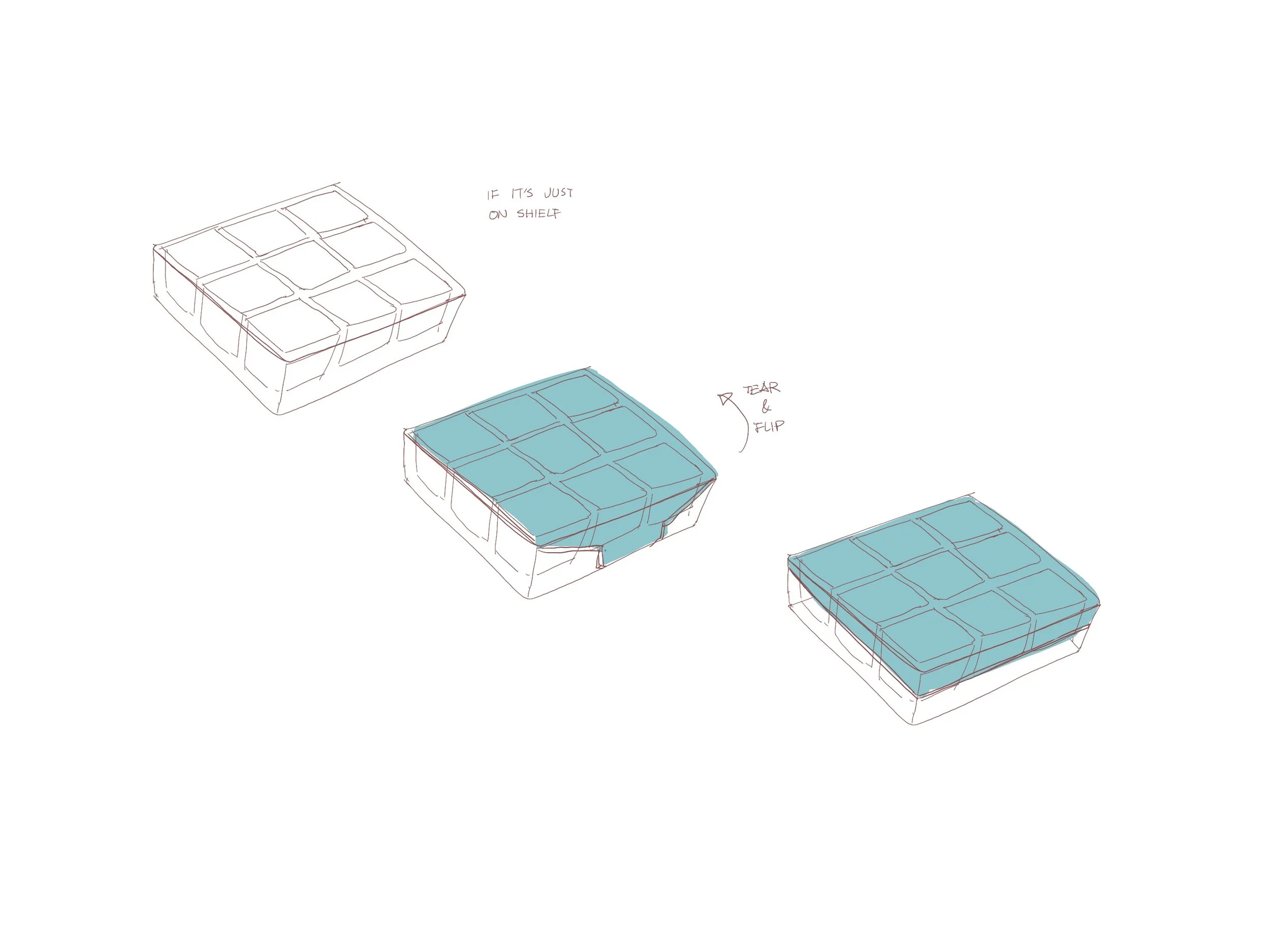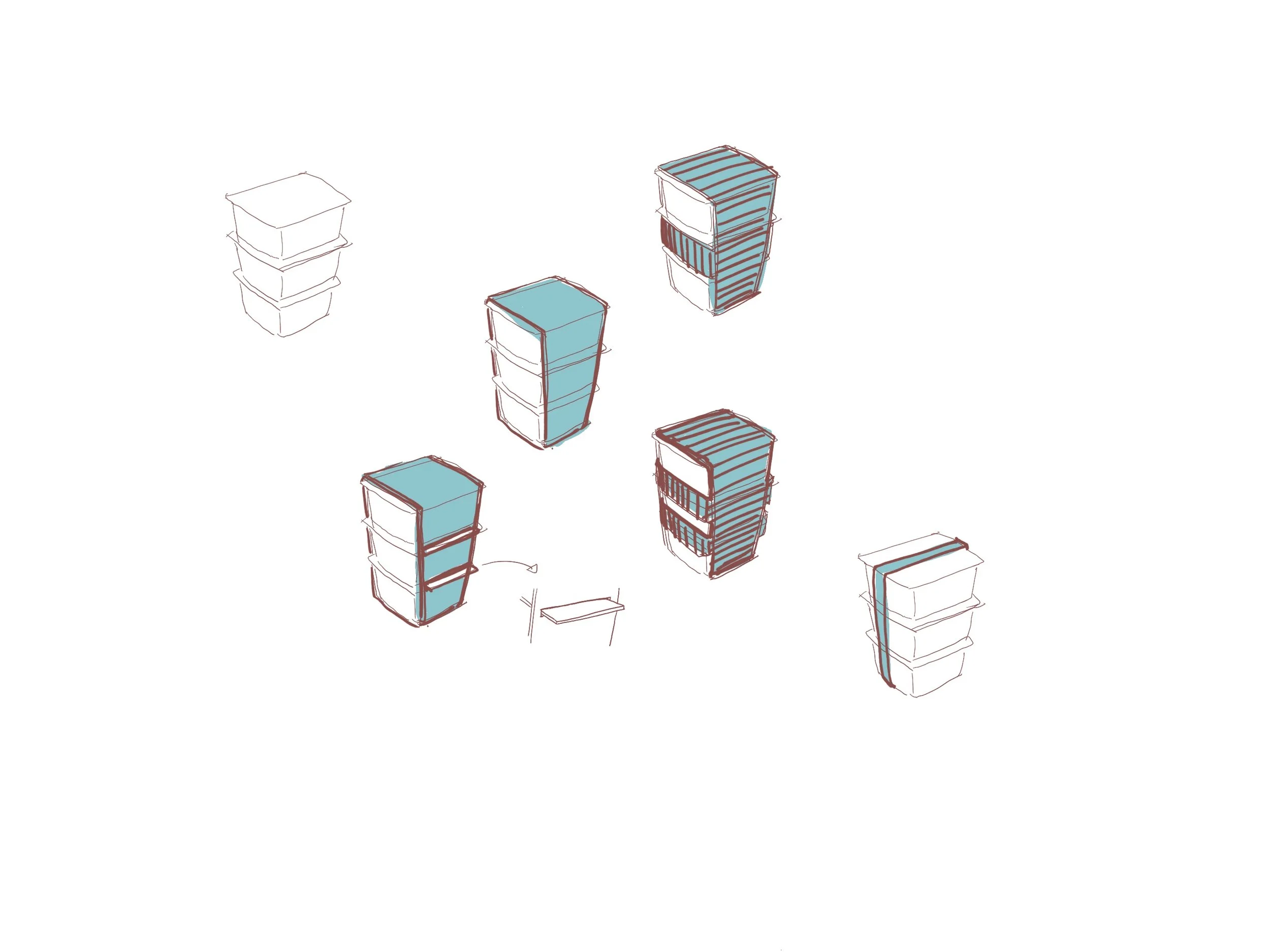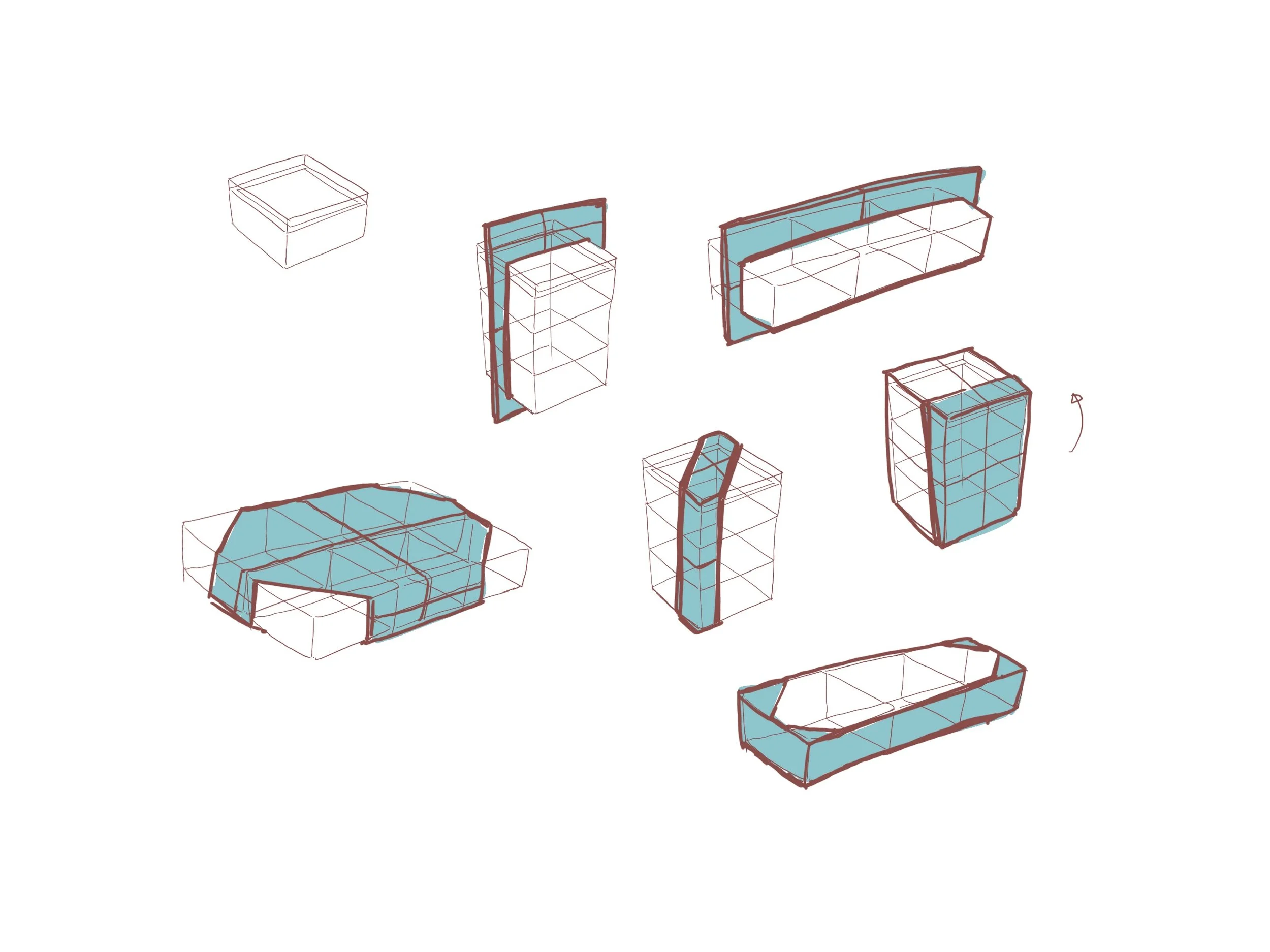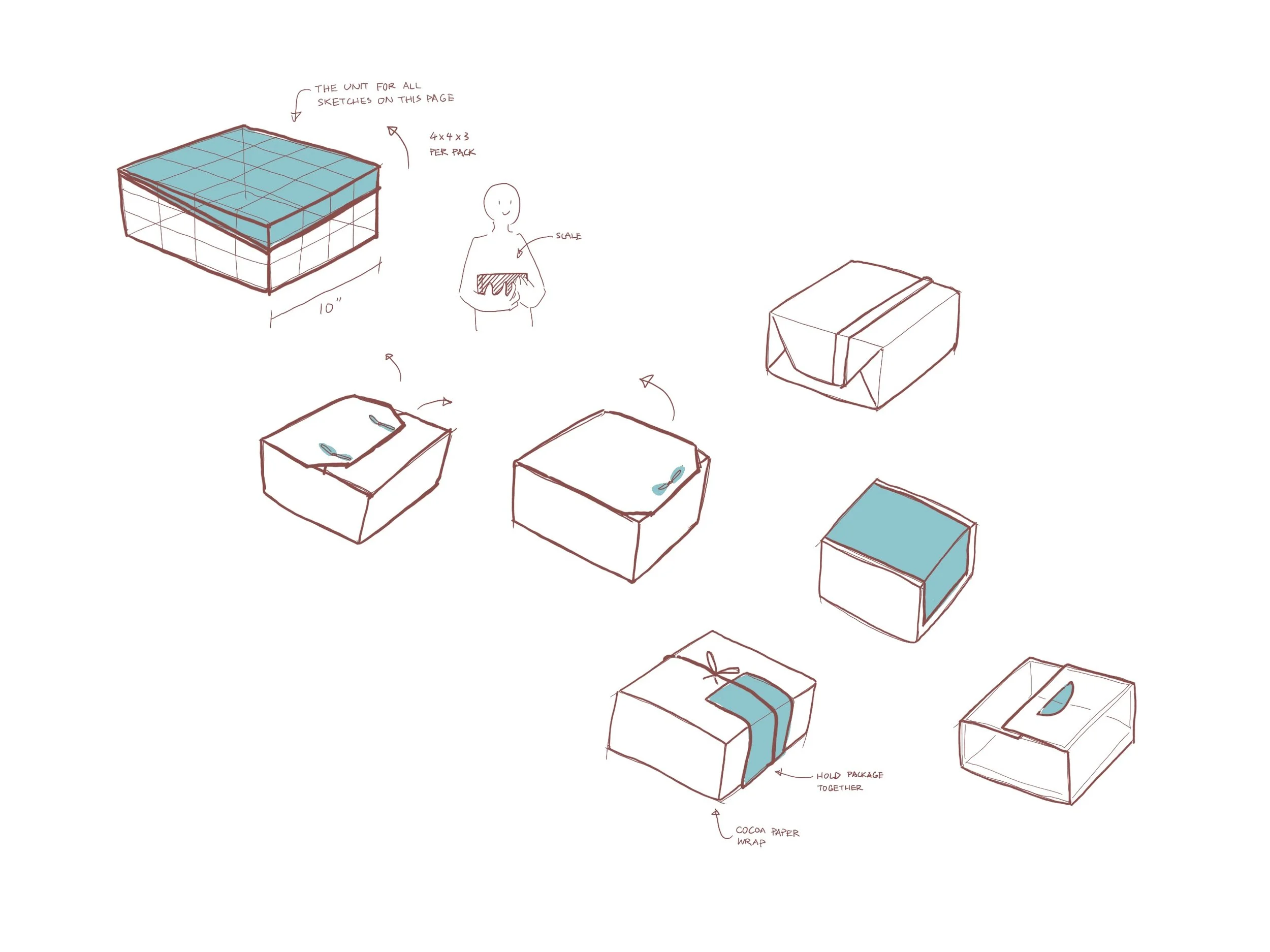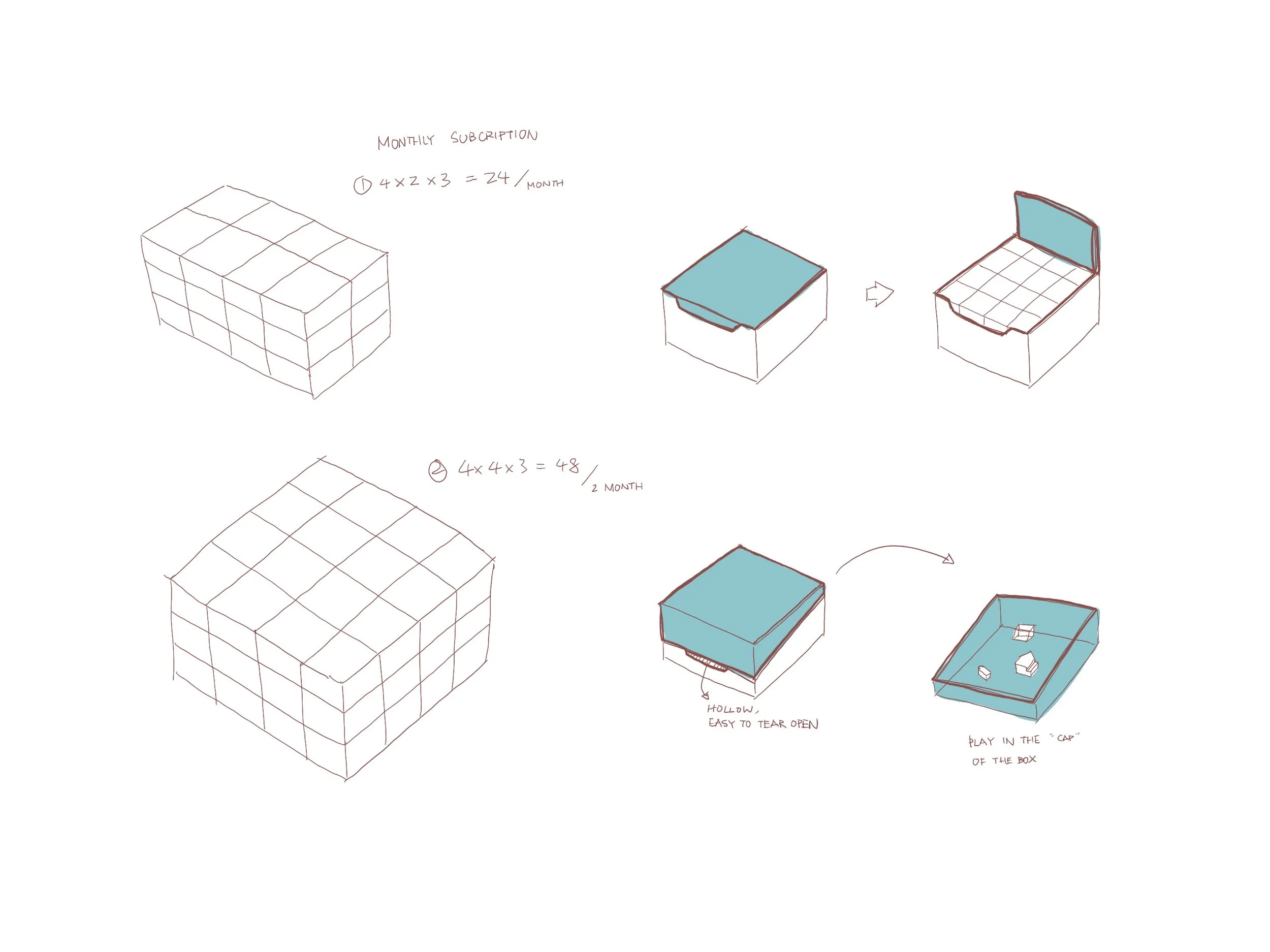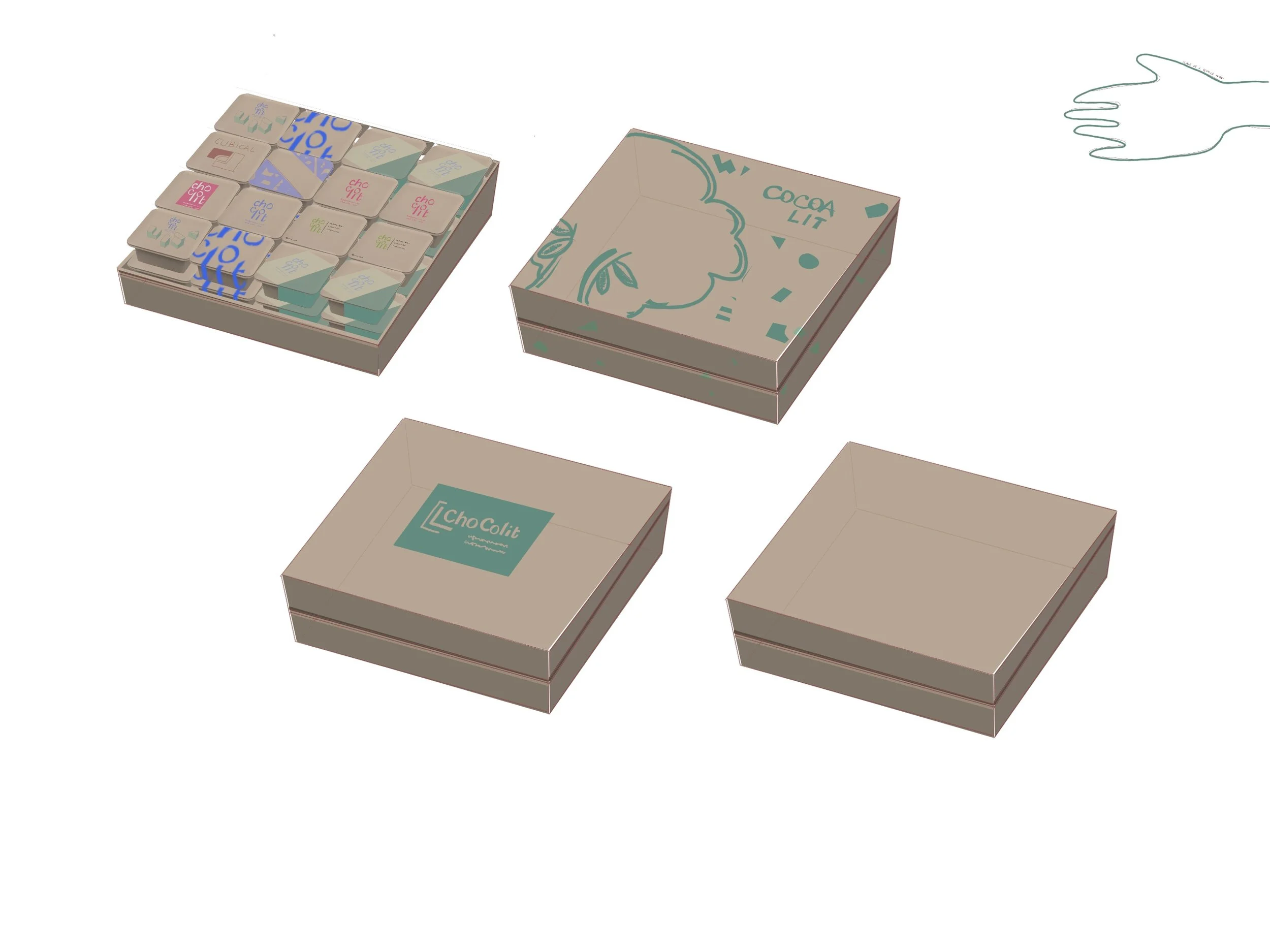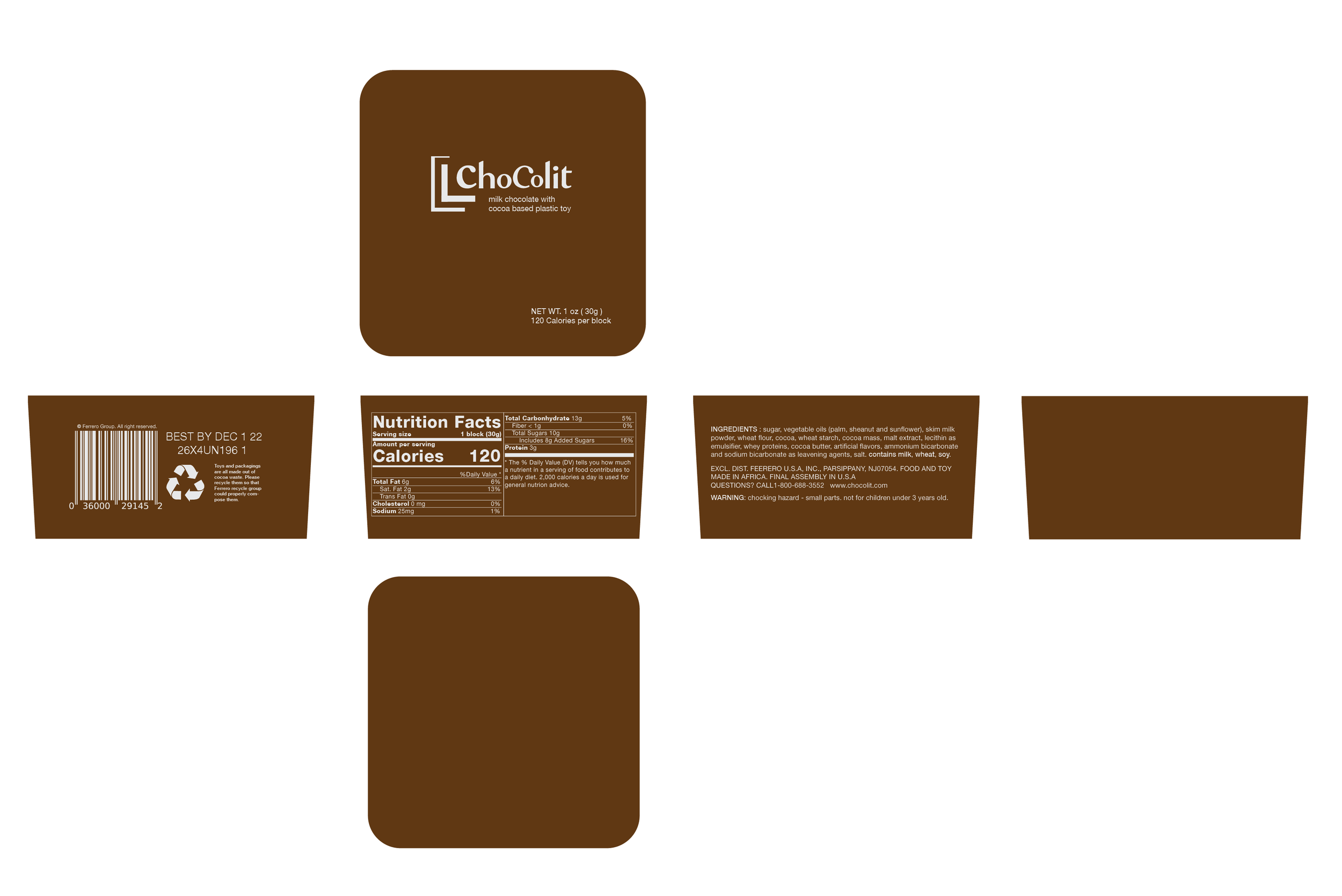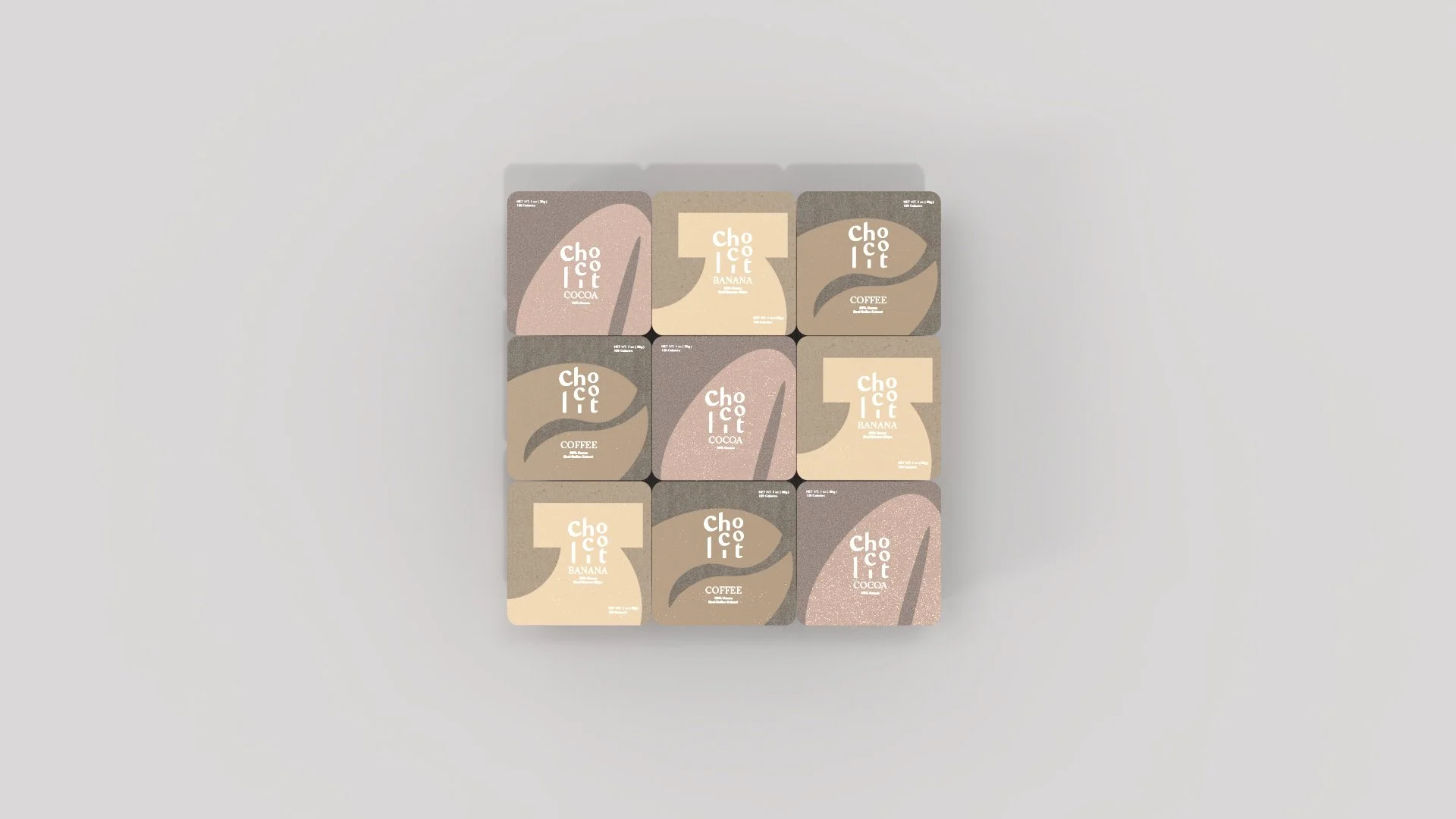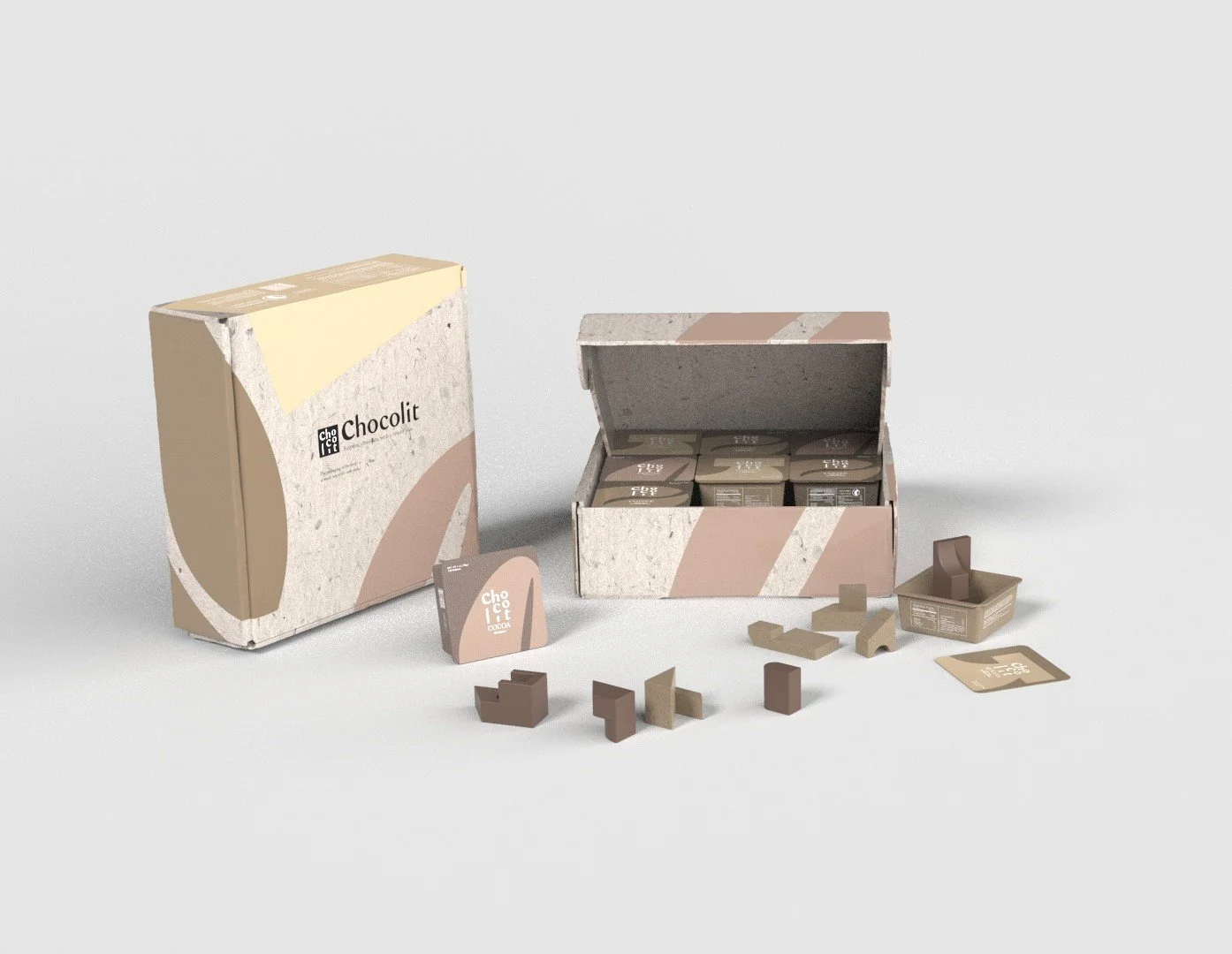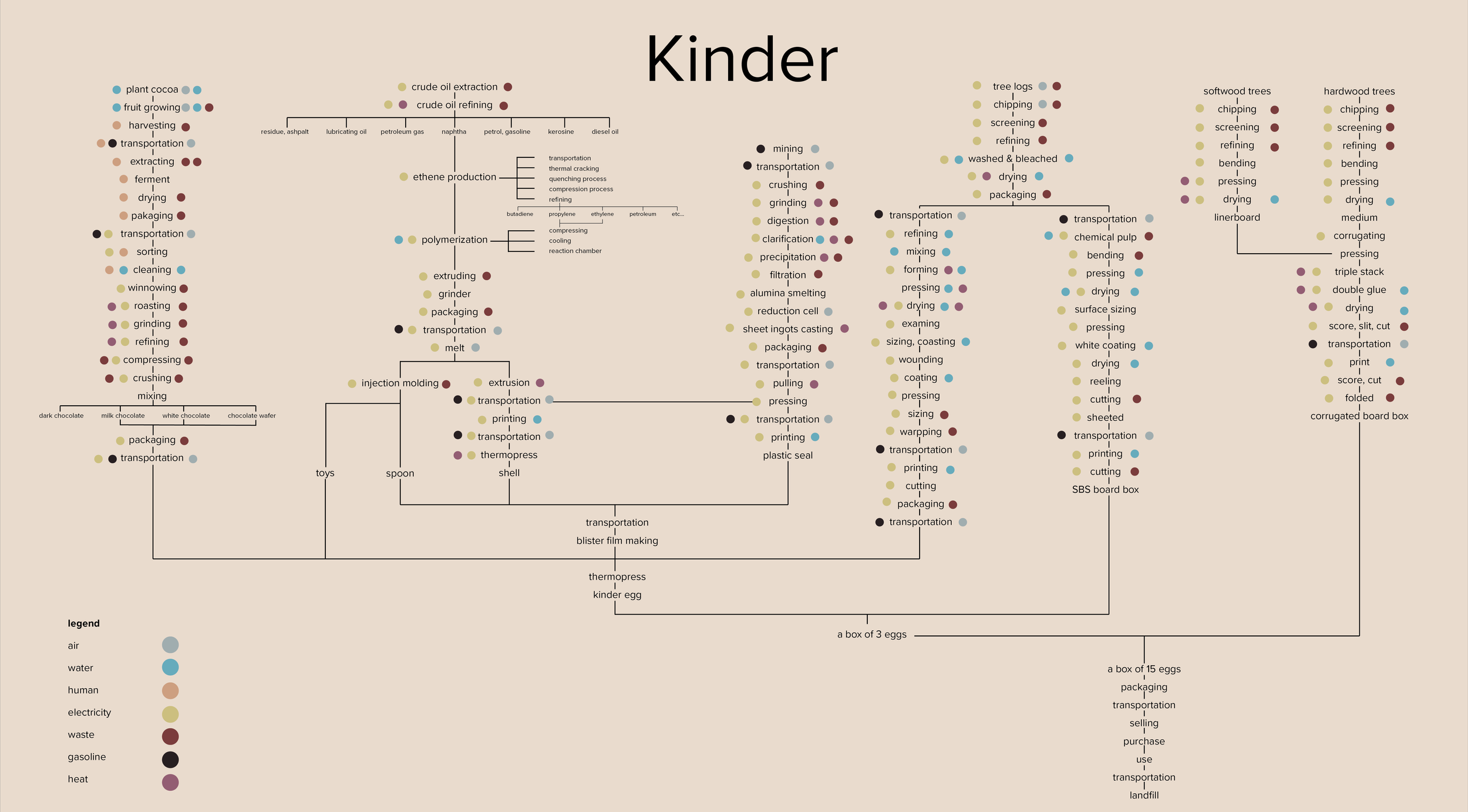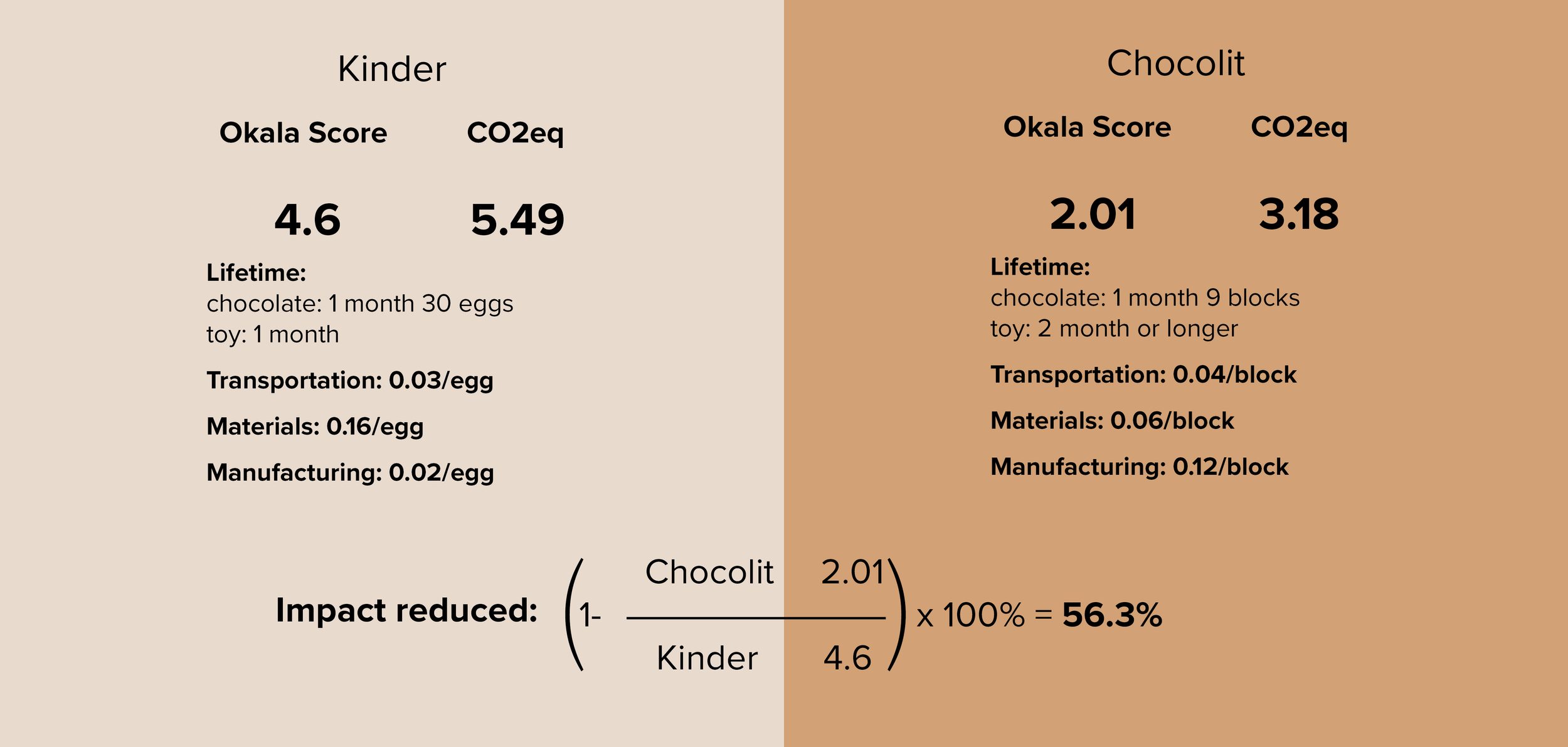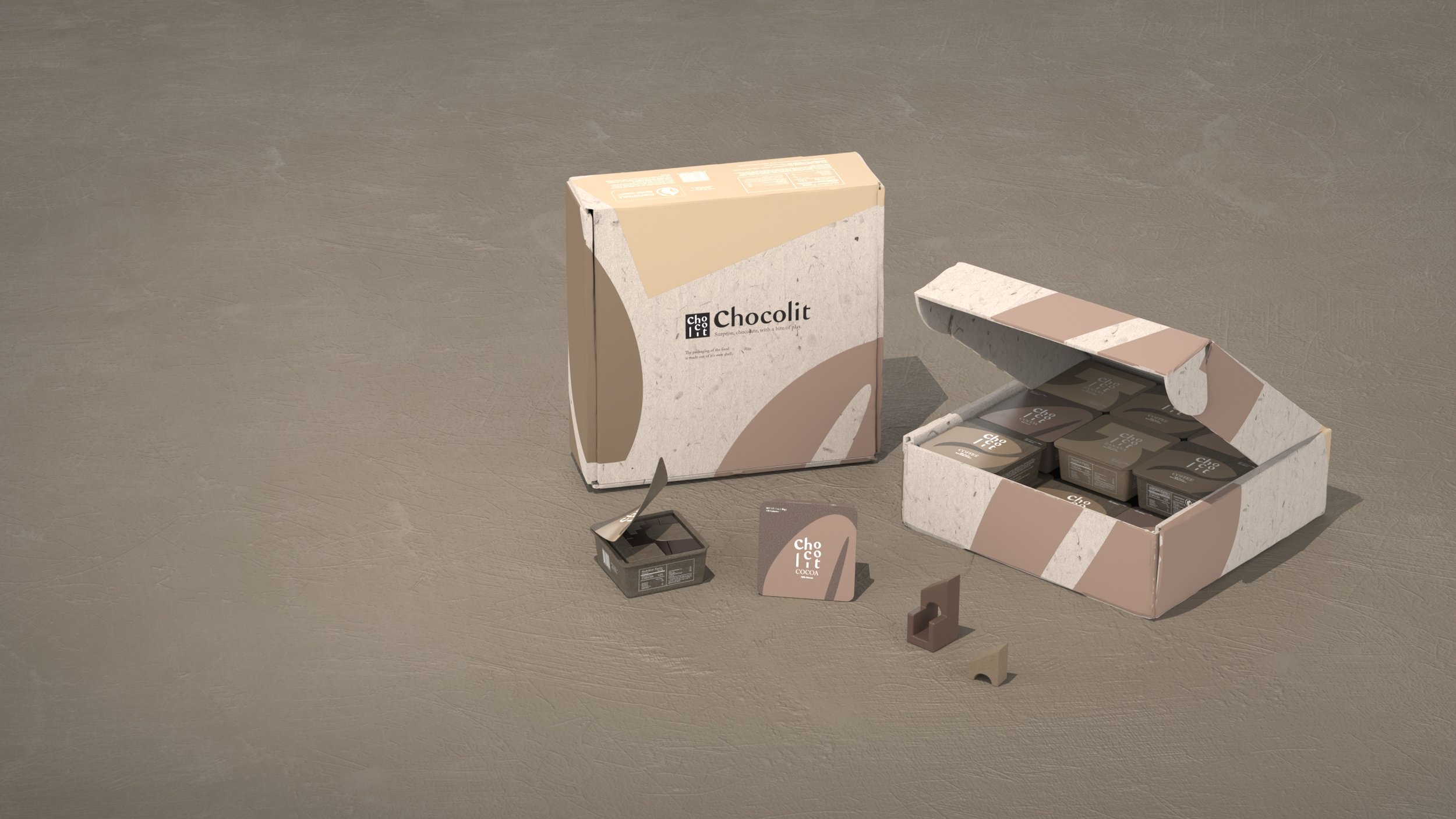
Chocolit
Chocolit is a sustainably designed chocolate and puzzle toy, that gives busy millennials an opportunity to bring some unexpected pleasure – and flavor – to their lives. Chocolit comes in three flavors - Cocoa, Banana, and Coffee – each flavor produced from sustainably grown and processed growing methods. Additionally, each flavor uses the waste material from its production to create the bioplastic puzzle pieces. Users can collect and play with abstract puzzle bricks while enjoying a delicious chocolate treat. The toy is designed to play in multiple ways- one can create abstract sceneries, play simple stacking games, or complete the whole puzzle.
Duration: 3 months
What I did: Concept building, Research, Packaging Design, Graphic Design, Form Design, System Design
Tools: Illustrator, Solidworks, Rhino, Keyshot, Gravity Sketch
Teamwork: Berly Dai, Sylvia Xiao
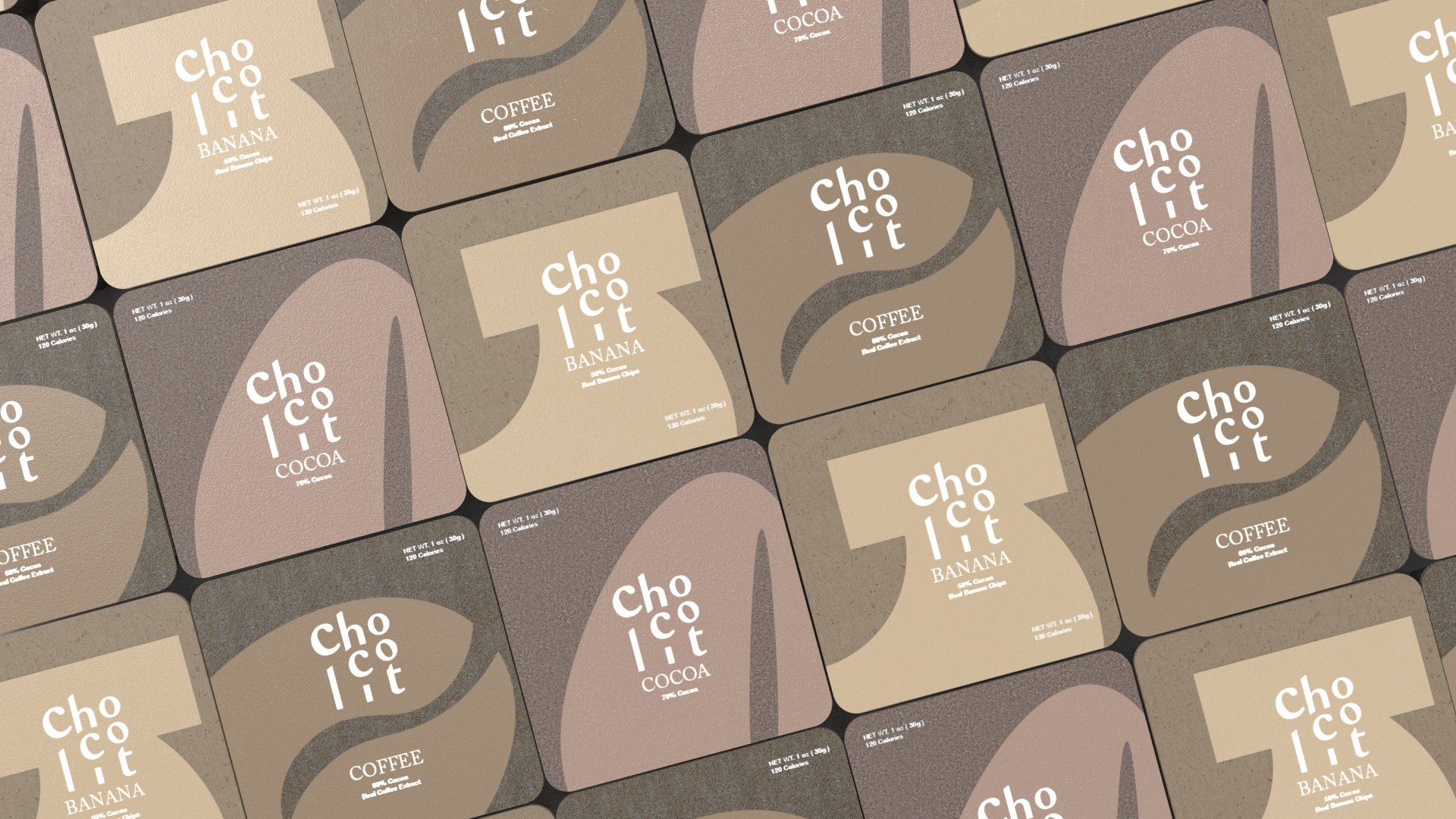
The System
Toy System
Compact design for chocolate and toys to reduce the overall packaging size.
The system 4 different patterns and each pattern has 3 different chocolate and toy combinations.
With 12 different variations, the proportion of chocolate and toy is 1:1.
Flavors
Shade-grown cocoa: planting cocoa trees with banana trees and coffee trees together
This method has a positive effect on soil fertility and makes the farm environment more resilient to changes in weather. This growing technique is not only more sustainable but was also the inspiration for our flavor offerings – dark chocolate, banana, and coffee. We also discovered a unique opportunity to take advantage of the other crops used in shade-grown cocoa production.
Coffee
Banana
Dark Chocolate
Materials
The chocolate in Chocolit is packed with its own shell!
There are 430,000 tons of cocoa shell waste created per year in worldwide chocolate production. From our research, we found that cocoa husk, mixed with banana peel or coffee grounds, could be made into a food-safe and compostable bio-plastic. Cocoa plastic could satisfy the requirements of chocolate packaging. Thus, we chose cocoa plastic as the material for the puzzle piece toys as well as the primary packaging. Cocoa paper (also derived from the husk) is used for secondary packaging.
Coffee grinds + Cocoa husk
Banana peel + Cocoa husk
Cocoa husk
Cocoa paper
User Scenario
Users will order a box on the website. After two days, the user receives the box and finds different flavors with randomized puzzles. The users will take one cube out of the box, take out a piece of chocolate, and enjoy it. While enjoying the taste, the users could play with the puzzle bricks in three different ways and celebrate the current moment. After consuming the chocolate, users could put the waste into the original box and send it back for industrial composting.
Reresearch
Target User
Millennials, Age: 24-39
72.1 million Americans are Millennials, the largest group in 2019.
35% of the workforce is Millennials in the U.S., the largest generation in the labor force.
Surprise Reduces Stress
44 % of millennials feel stressed, all or most of the time due to financial concerns, family welfare, and career expectations.
The brain finds unexpected pleasures more rewarding than expected ones.
Surprise works efficiently with certainty.
Market Research
Competitive Market
We choose Kinder egg as a benchmark product for further study since it is the most popular product within the toy combined with the treats market in the US.
Kinder Tear Down
Pros:
Easy to open
Fun to play with toy
A surprise inside
Cons:
One-time play toy
Lifecycle Analysis
Many virgin materials are involved in the process
Long distance for transportation
Short life span
Parts are too small to recycle
Design Goals
Sustainability
Reduce virgin materials
Reduce transportation impact
Prolong toy’s life span
Optimize end of life
Health
Utilize surprise to reduce stress
Use treats that are relatively healthier to human body
Design Aesthetics
Geometric
Calm
Neutral
Sophisticated
Concept Development
Ideation
Dematerialization: Single material, dematerialized makeover
Rematerializaztion: Repurposed, recycled, local materials
Lifespan: Ephemeral, forever friend, second life
Footprint: Expand/collapse, 2d to 3d, design for disassembly
Design Direction
Concept 1: packaging as 3D puzzles
Concept 2: toy book
Concept 3: surprise music box
Concept 4: 3d puzzle game in conjunction with chocolate
We decided on Concept 4 because of its collectability, creativity, and compatibility.
Refinement
After determining the puzzle system and patterns, we recognized that the flat design does not meet the playing requirements of our target customers, therefore we upgraded our design to a 3D puzzle and added another level of complexity.
We conducted a series of user tests after developing the whole toy system. The goal is to adjust the size of the toy pieces, the level of difficulty, and the possibility of playing with the toys. The result of the testing is really positive with both single player and multiple players.
Graphic Design
Final Logo
Label Design
Packaging Design
Validation
Comparison
Impacts
